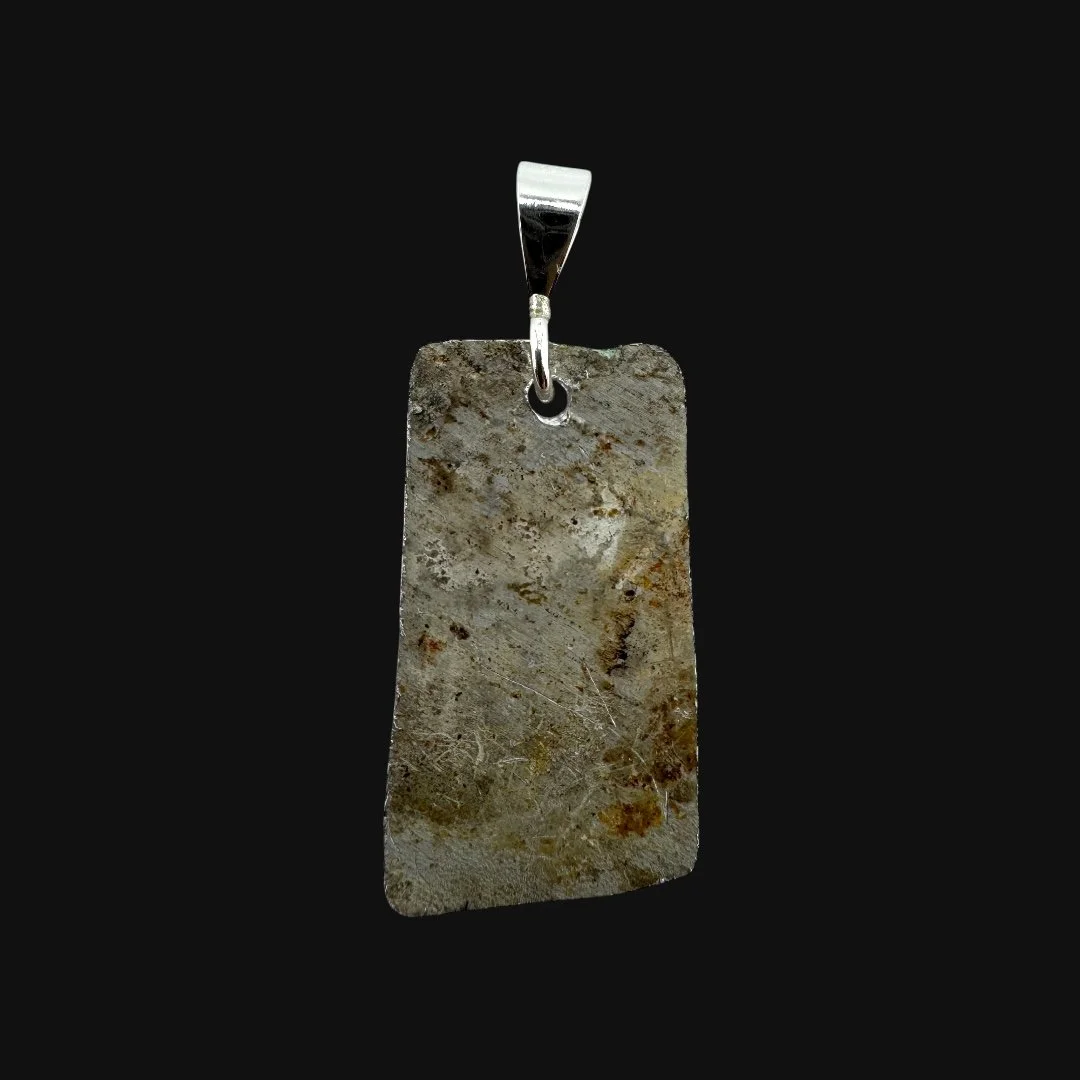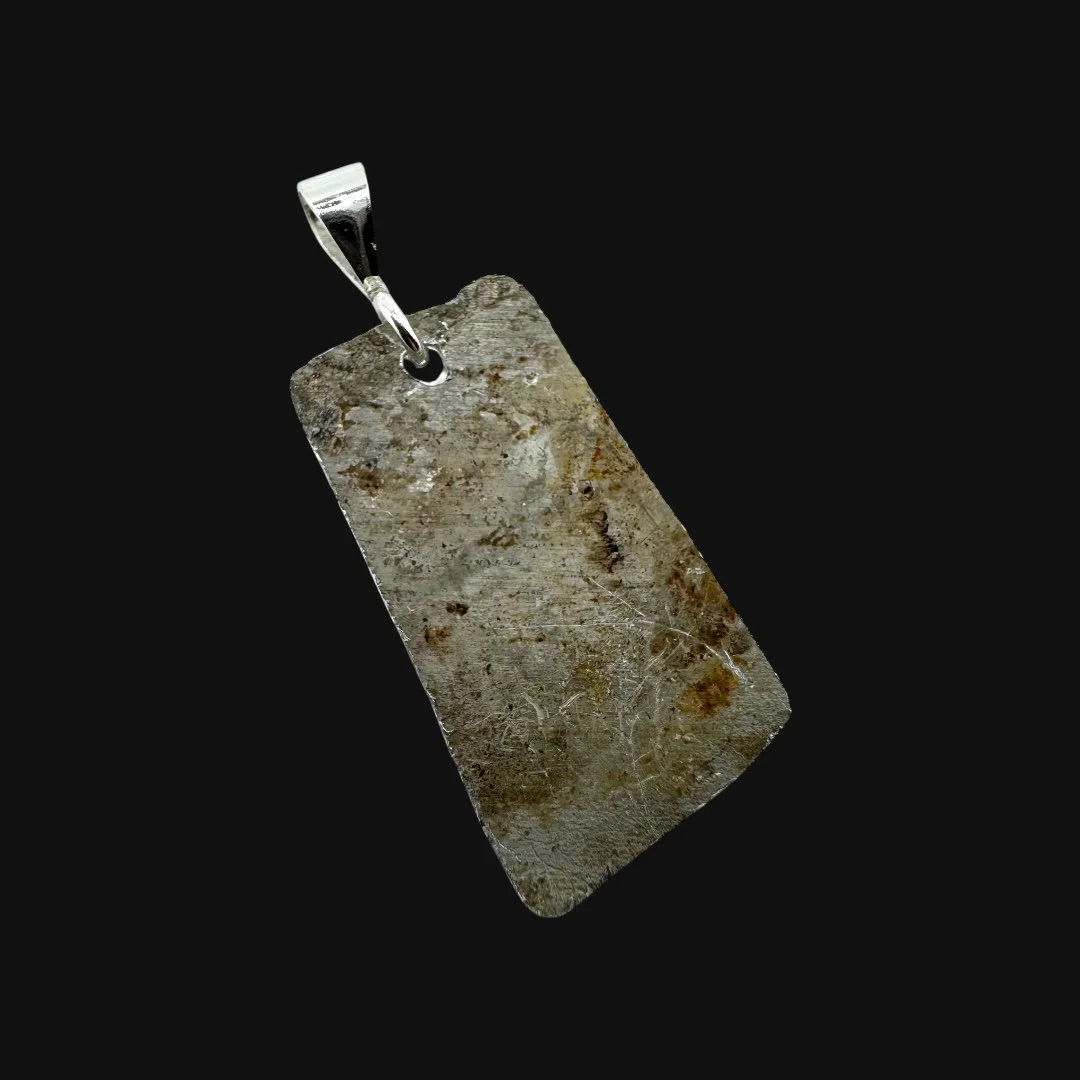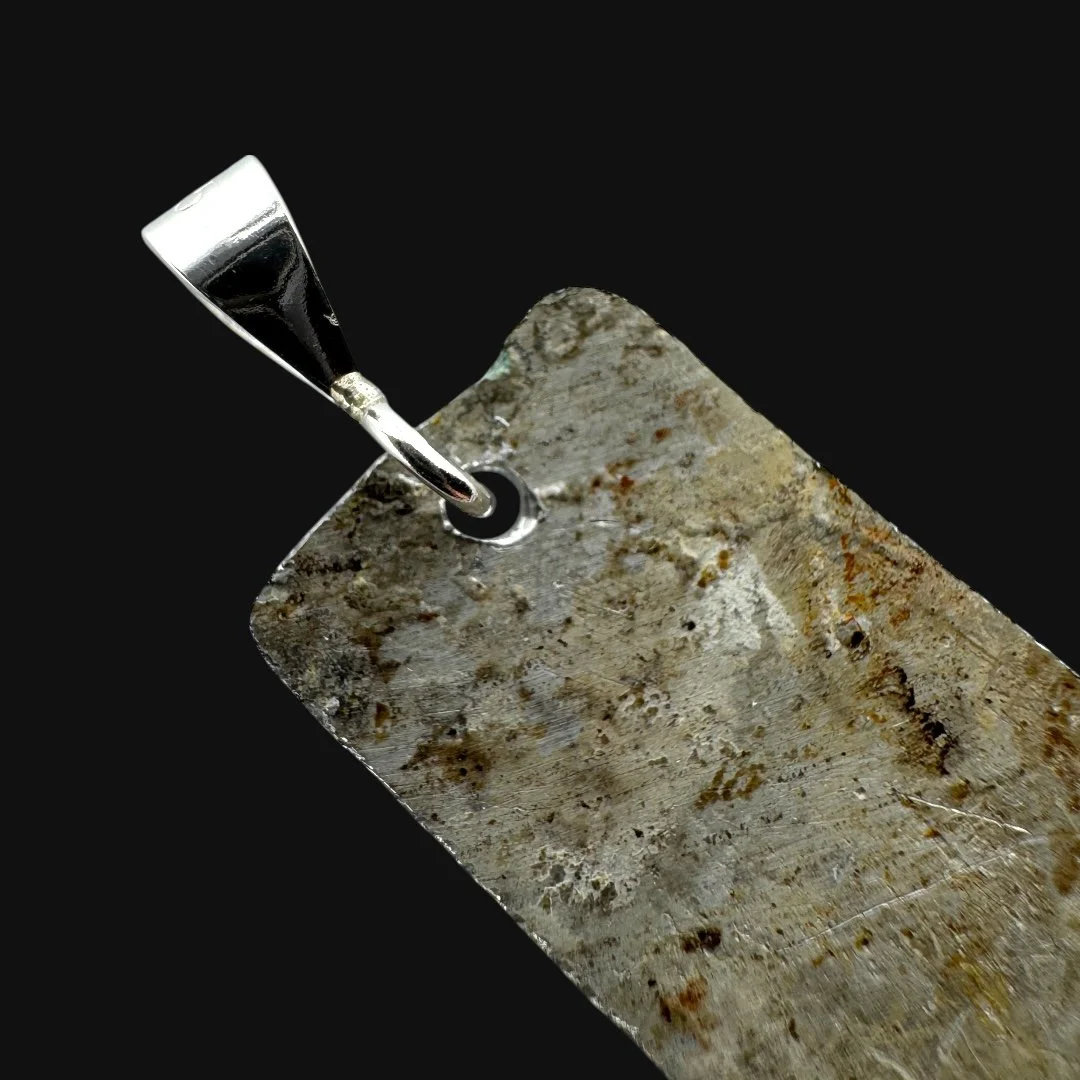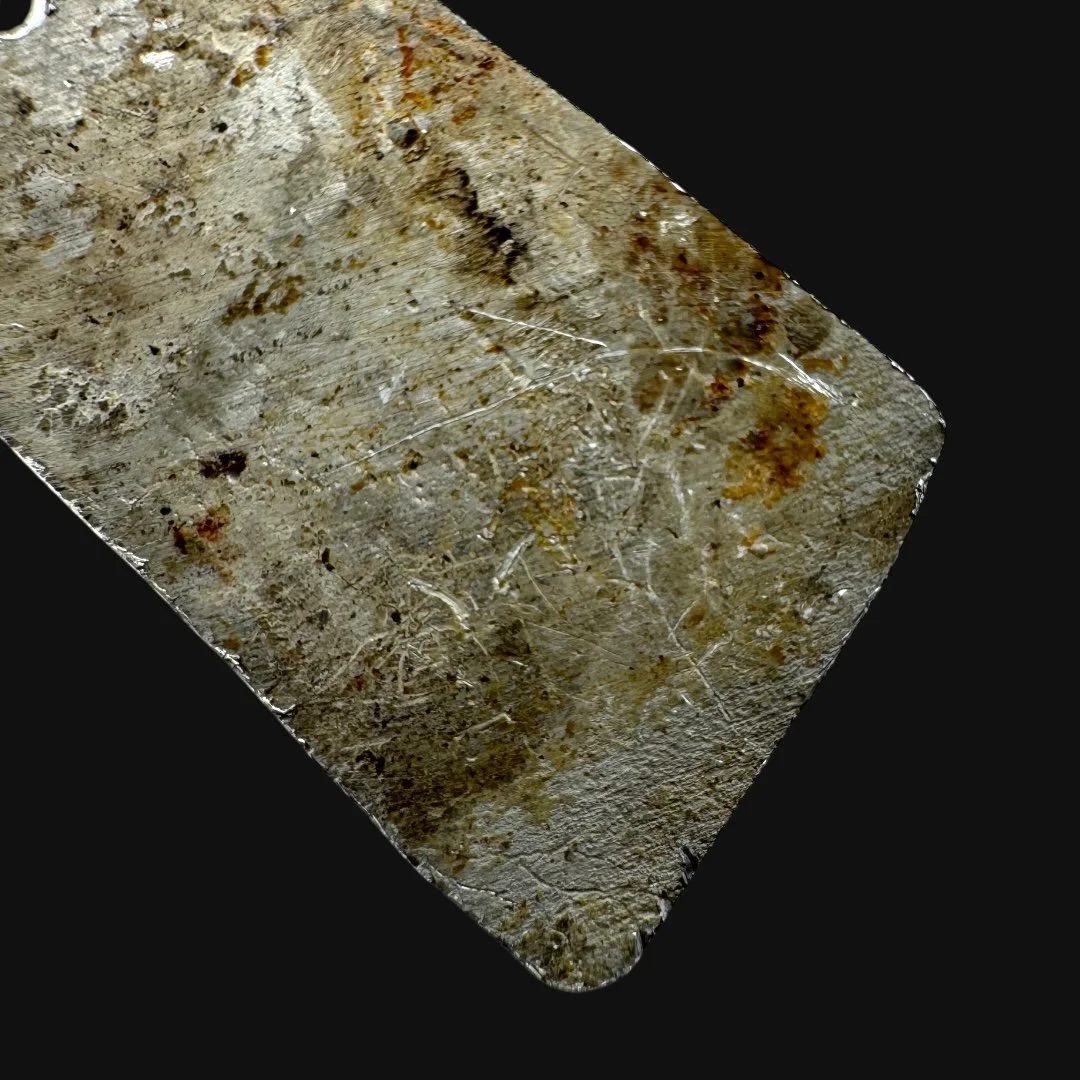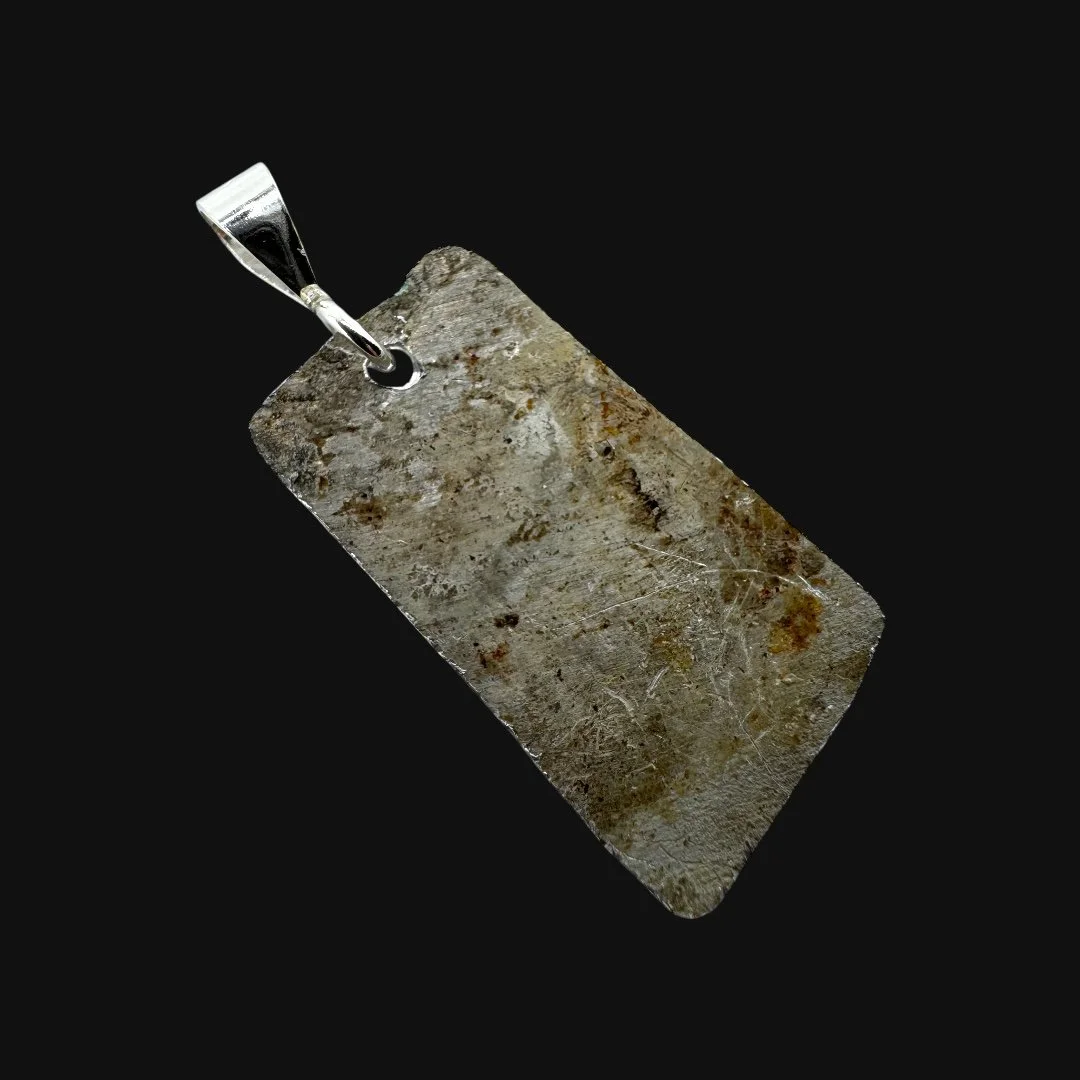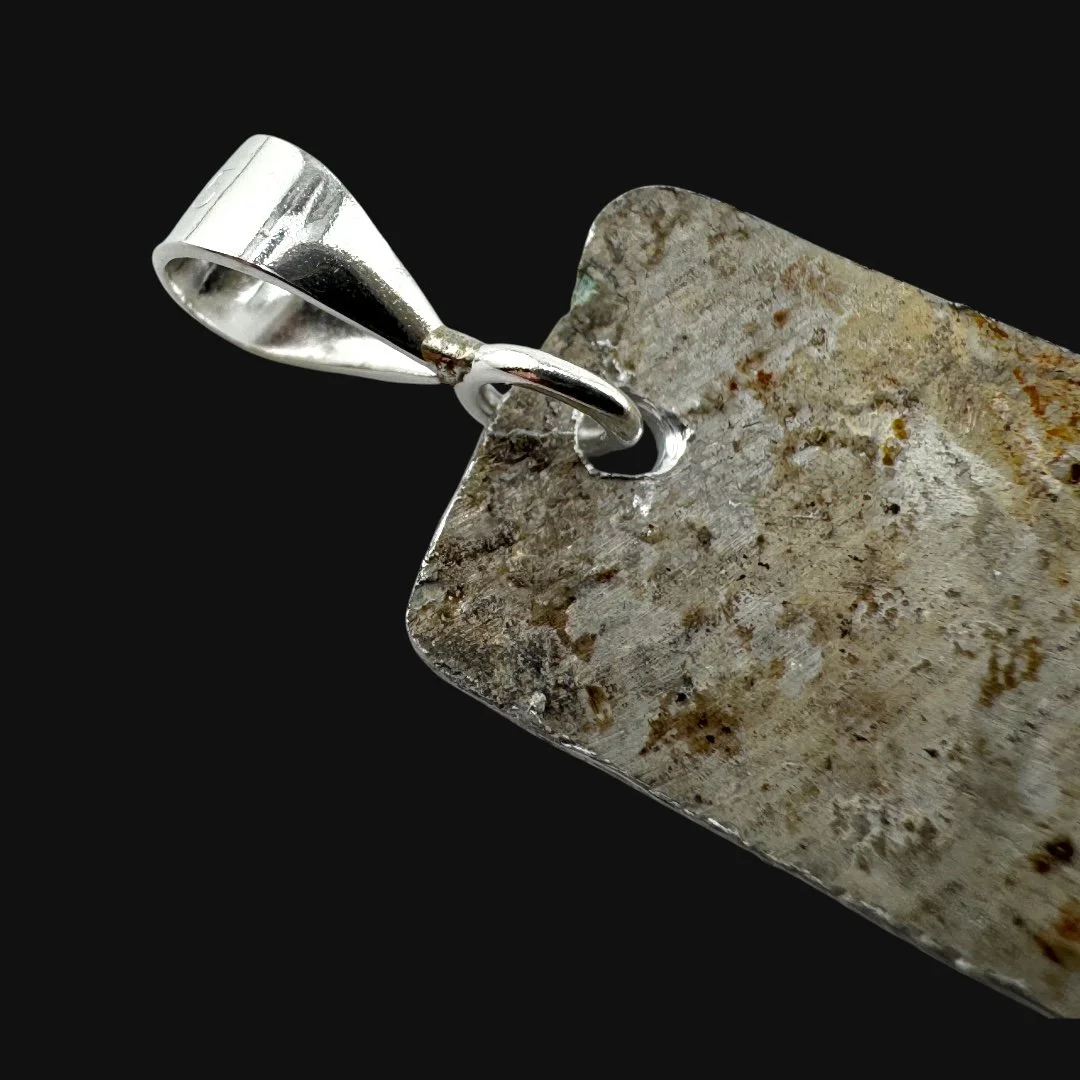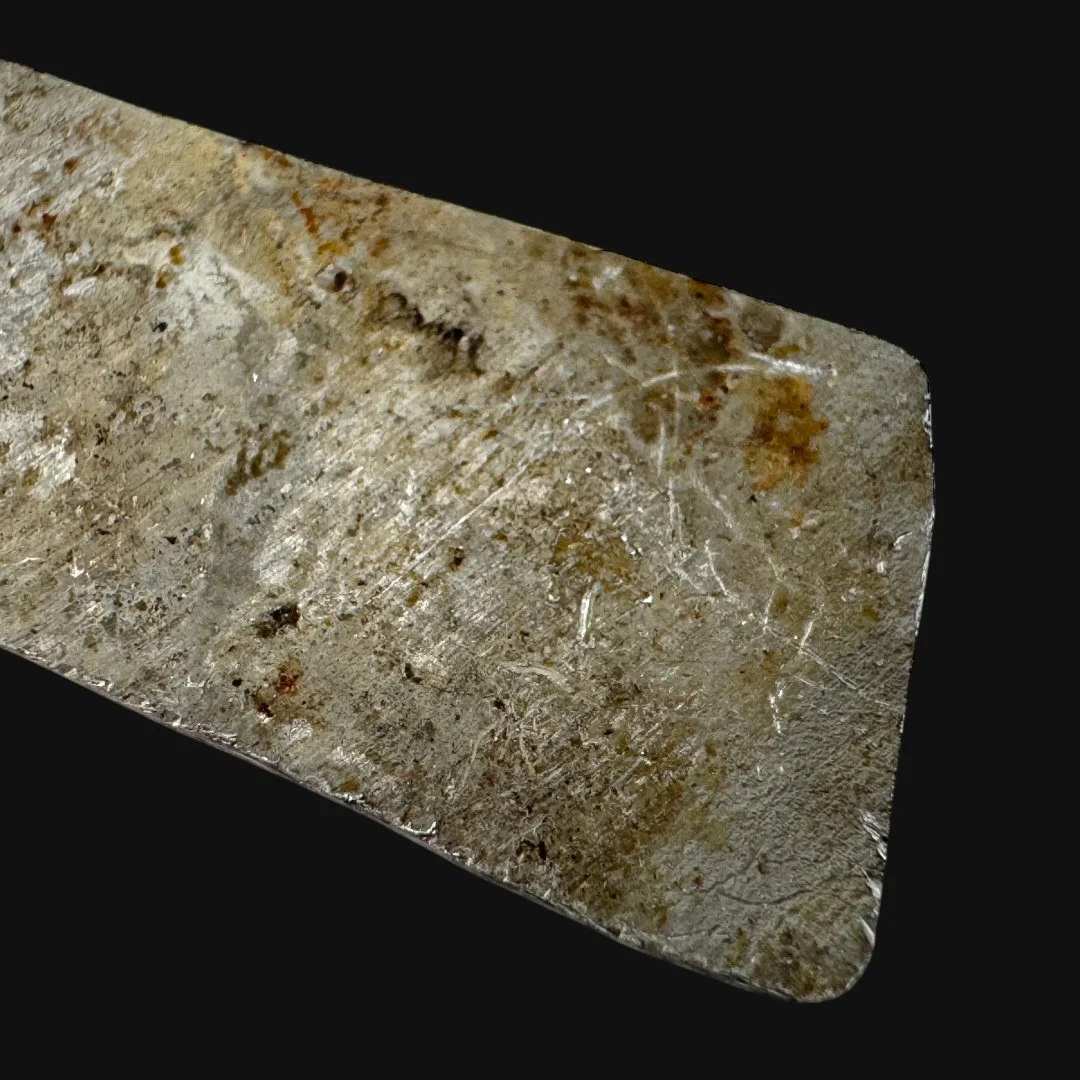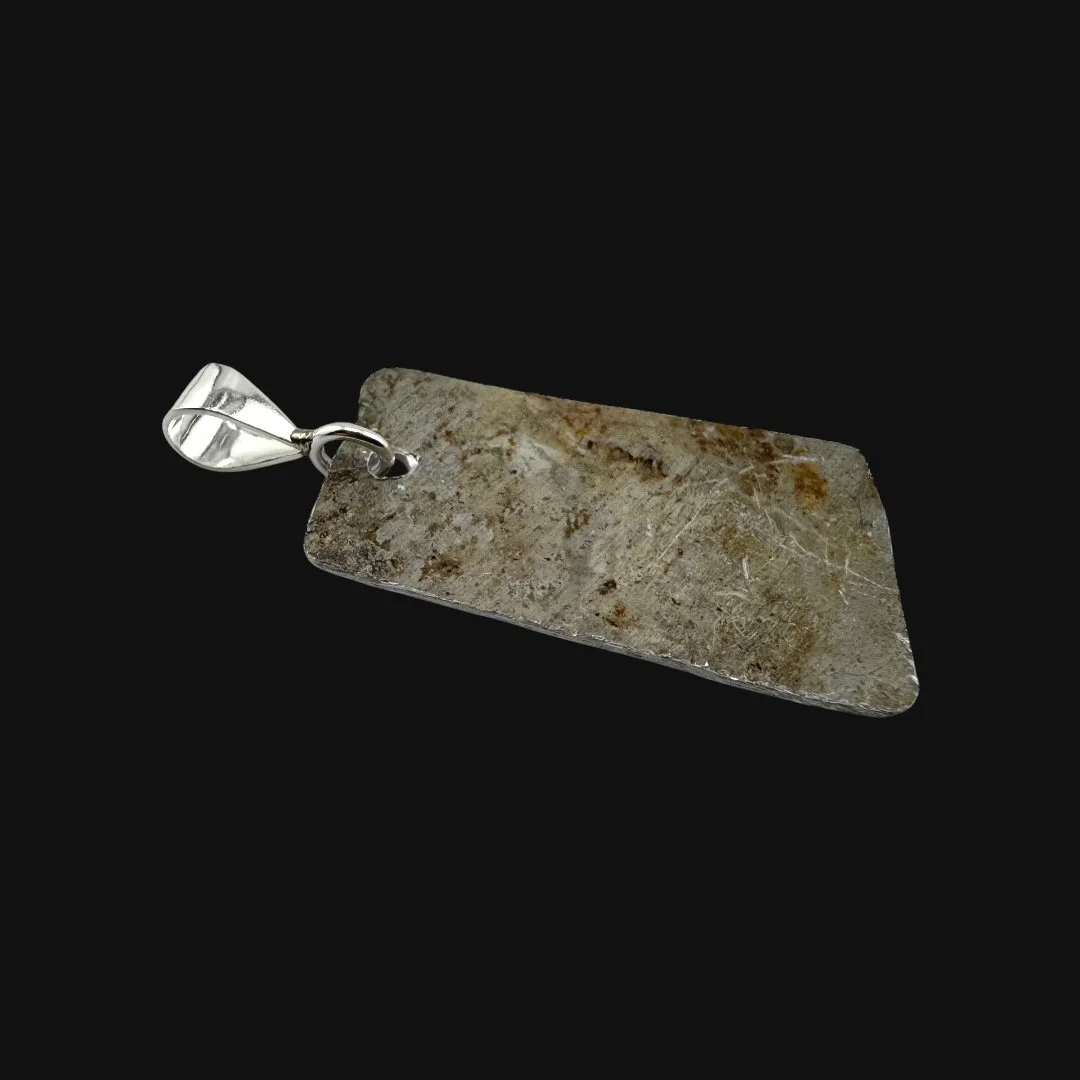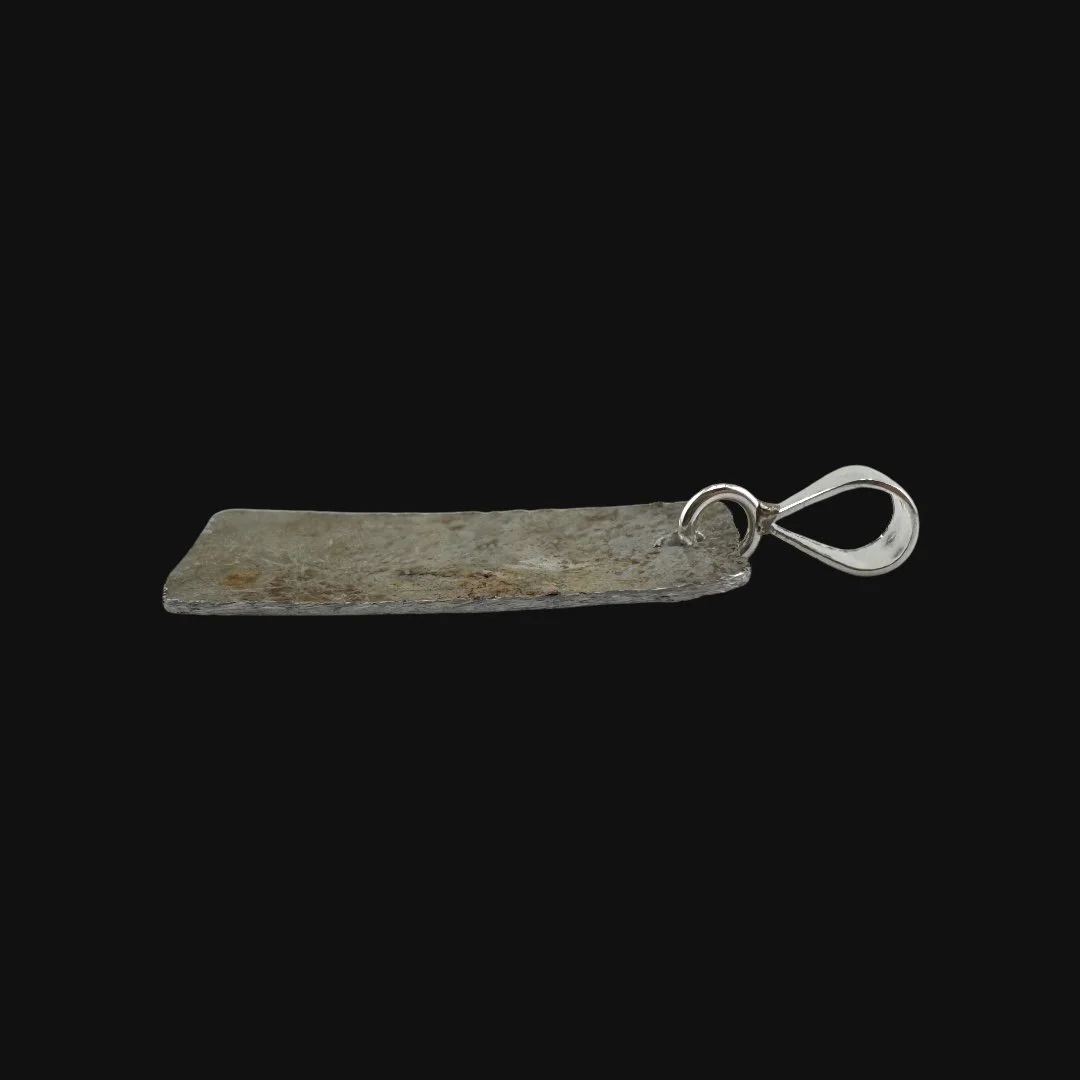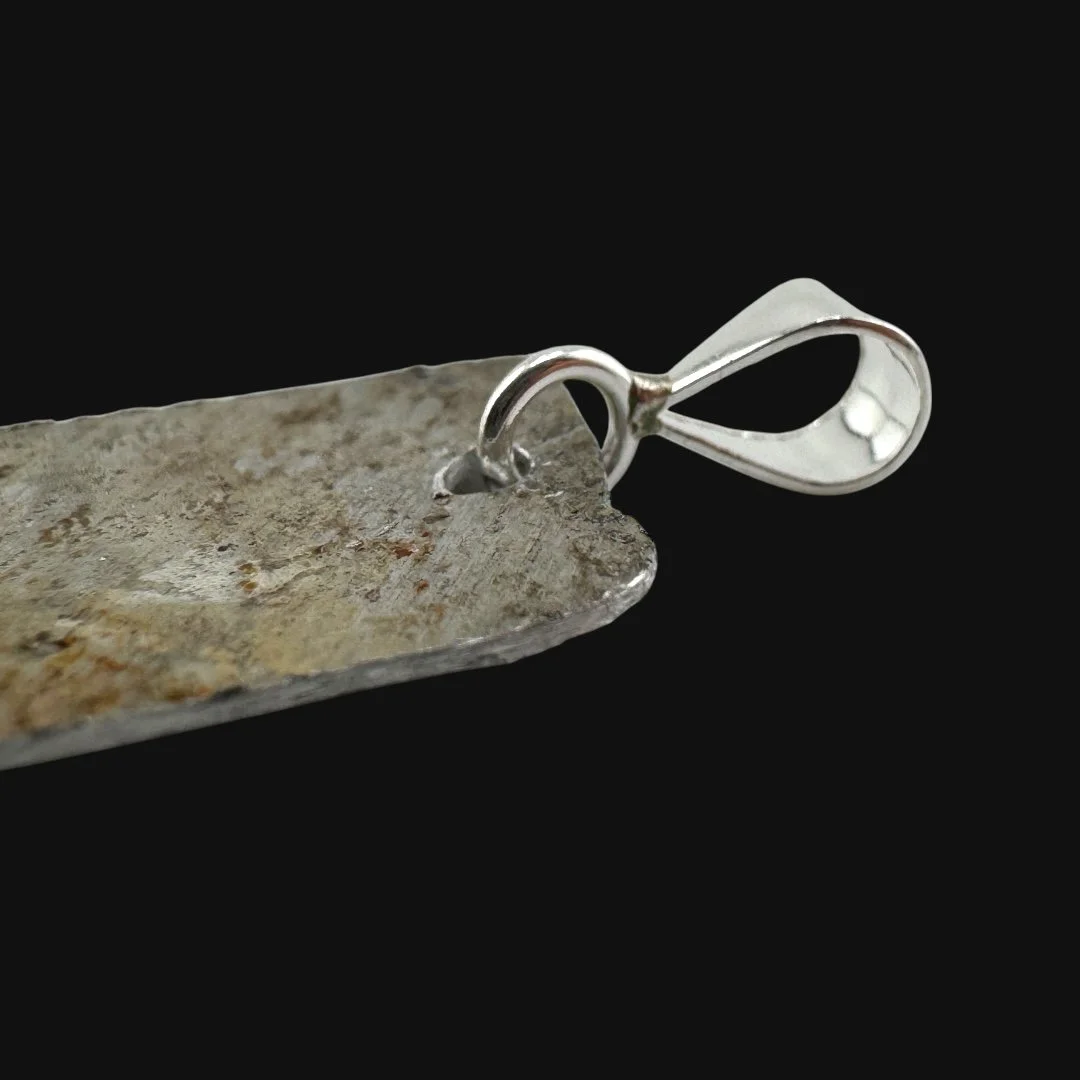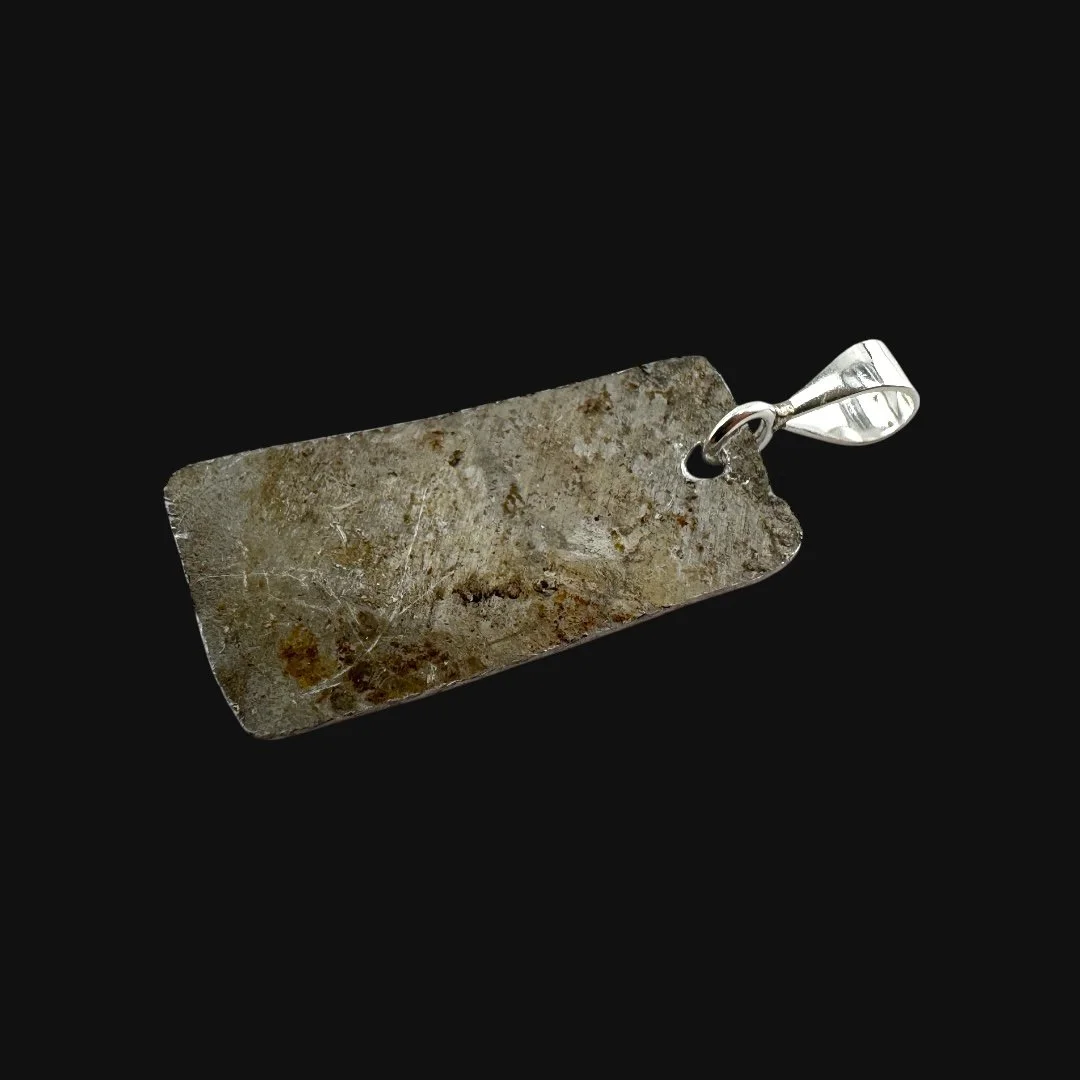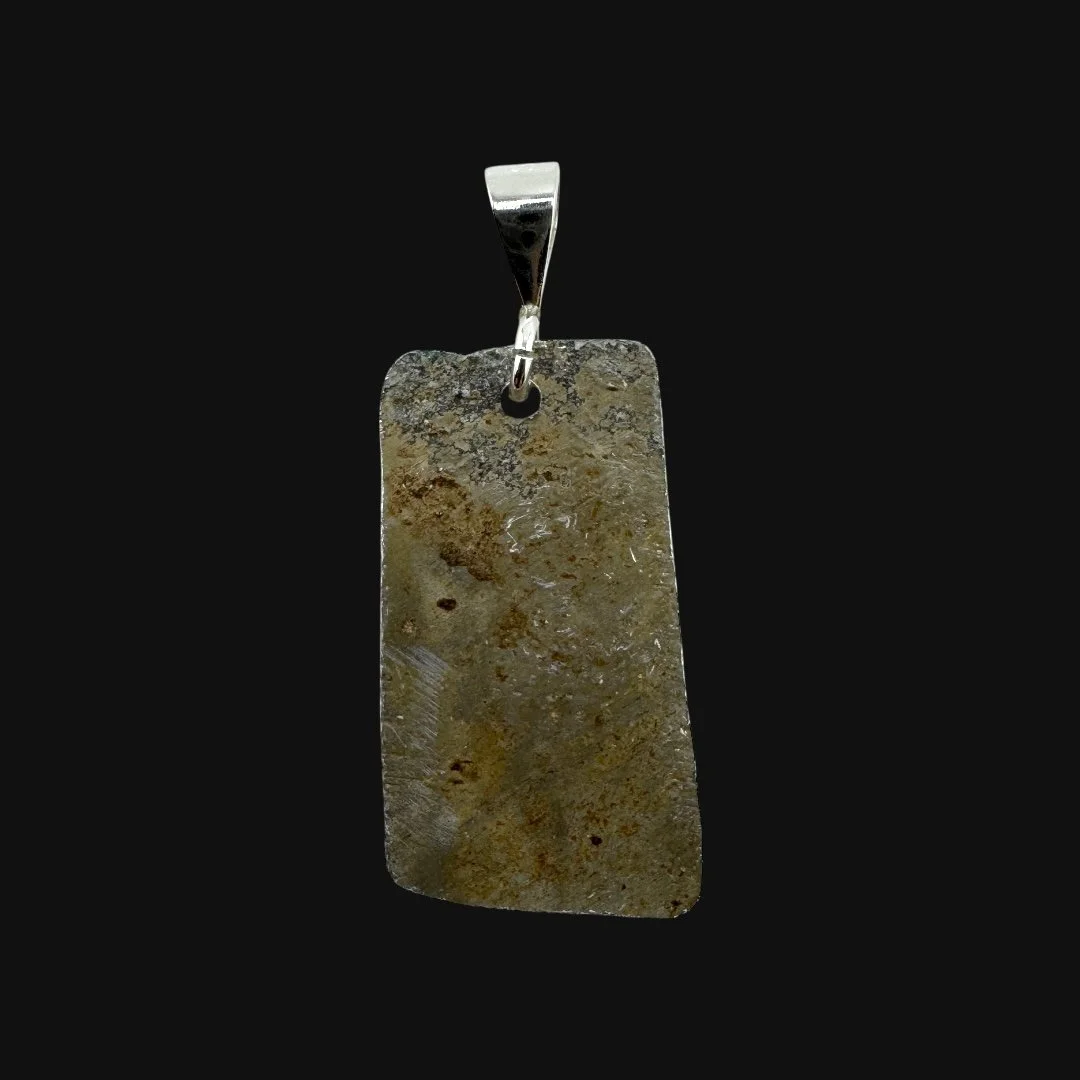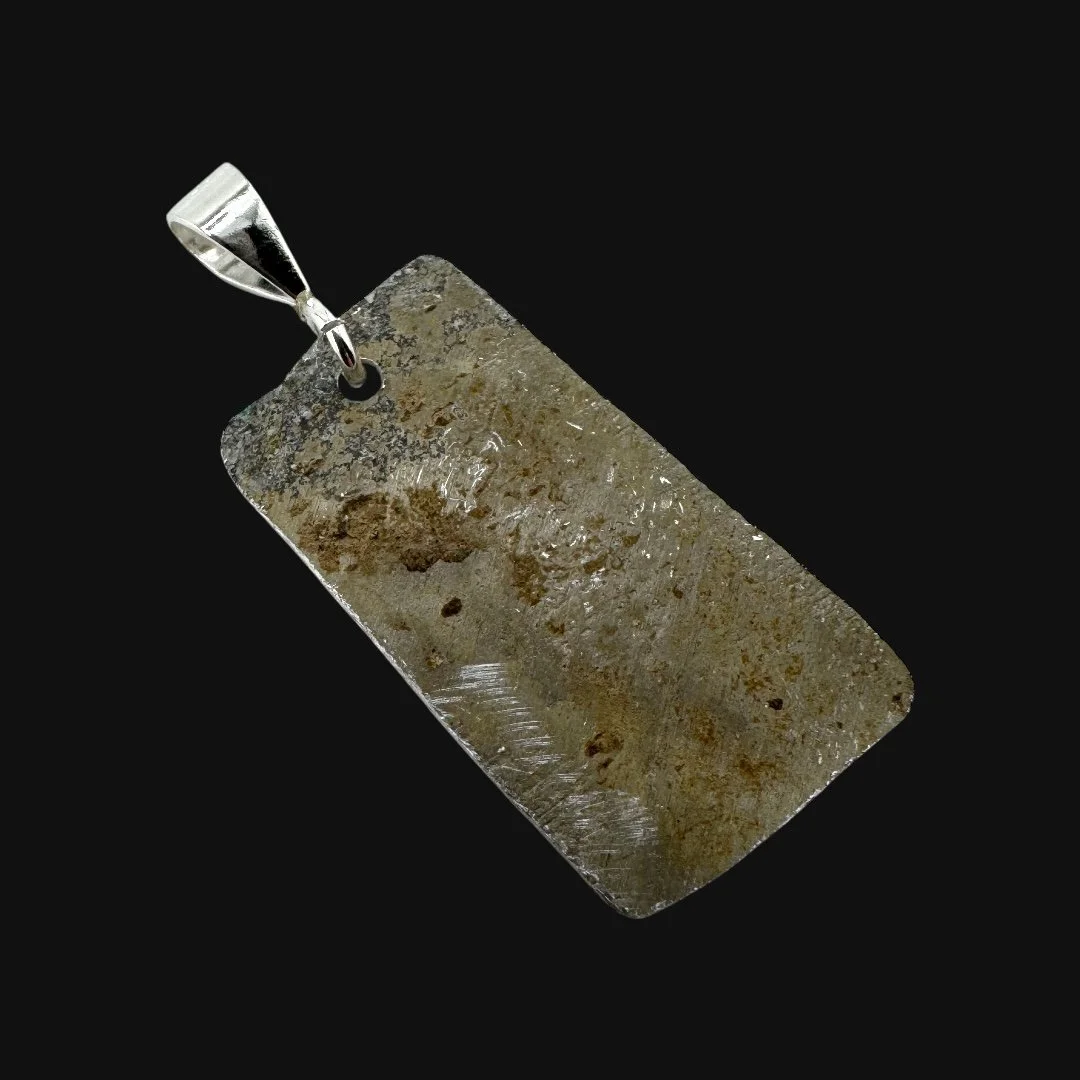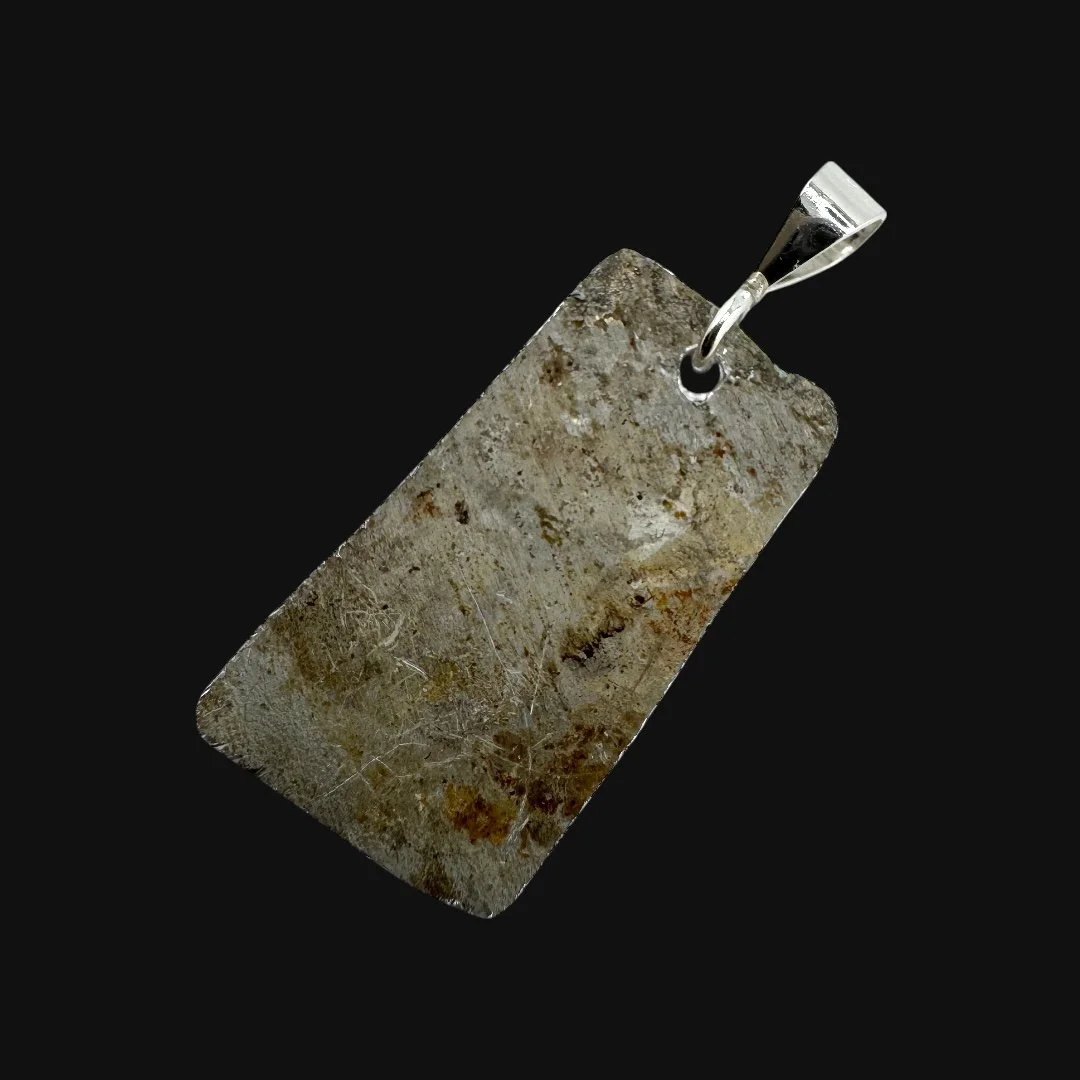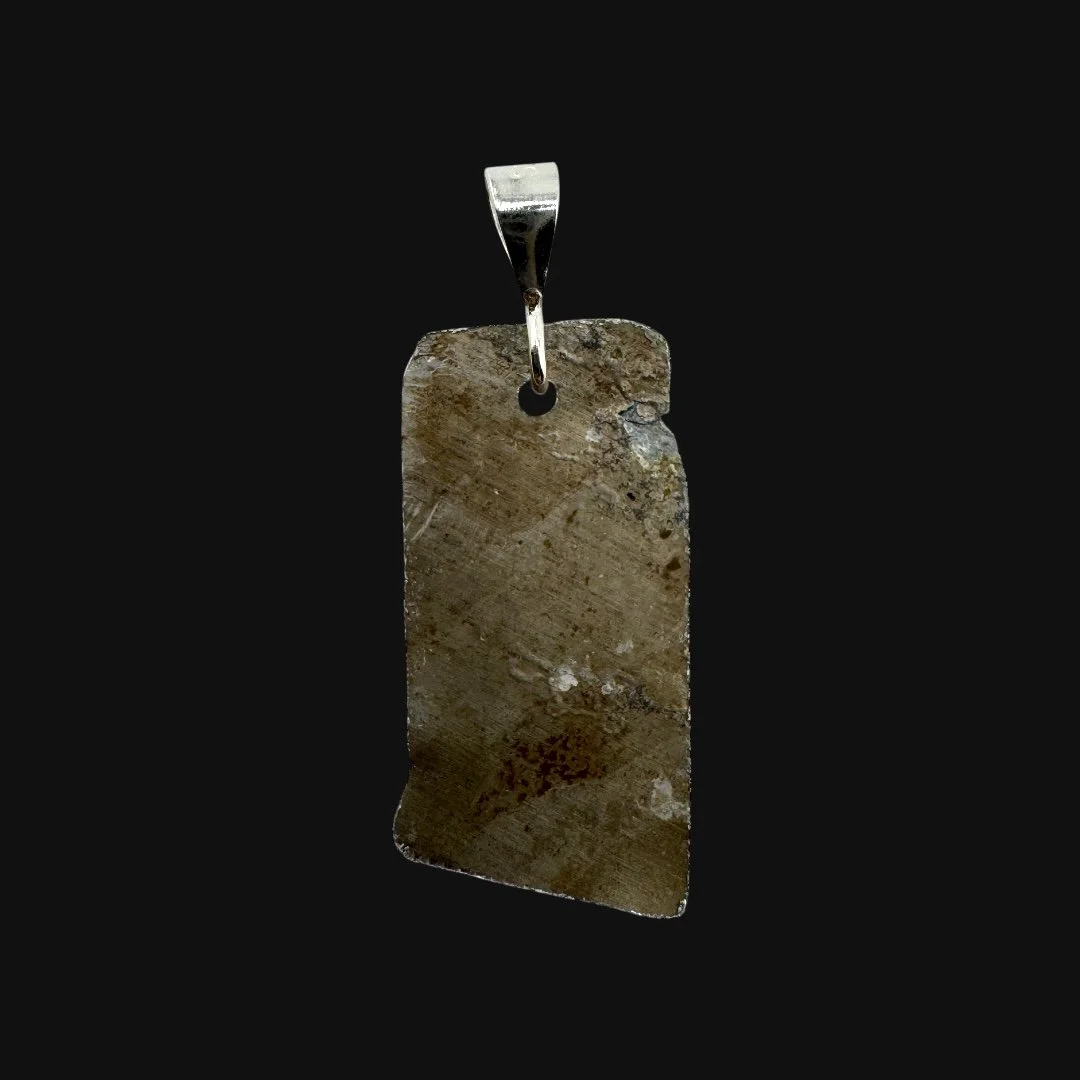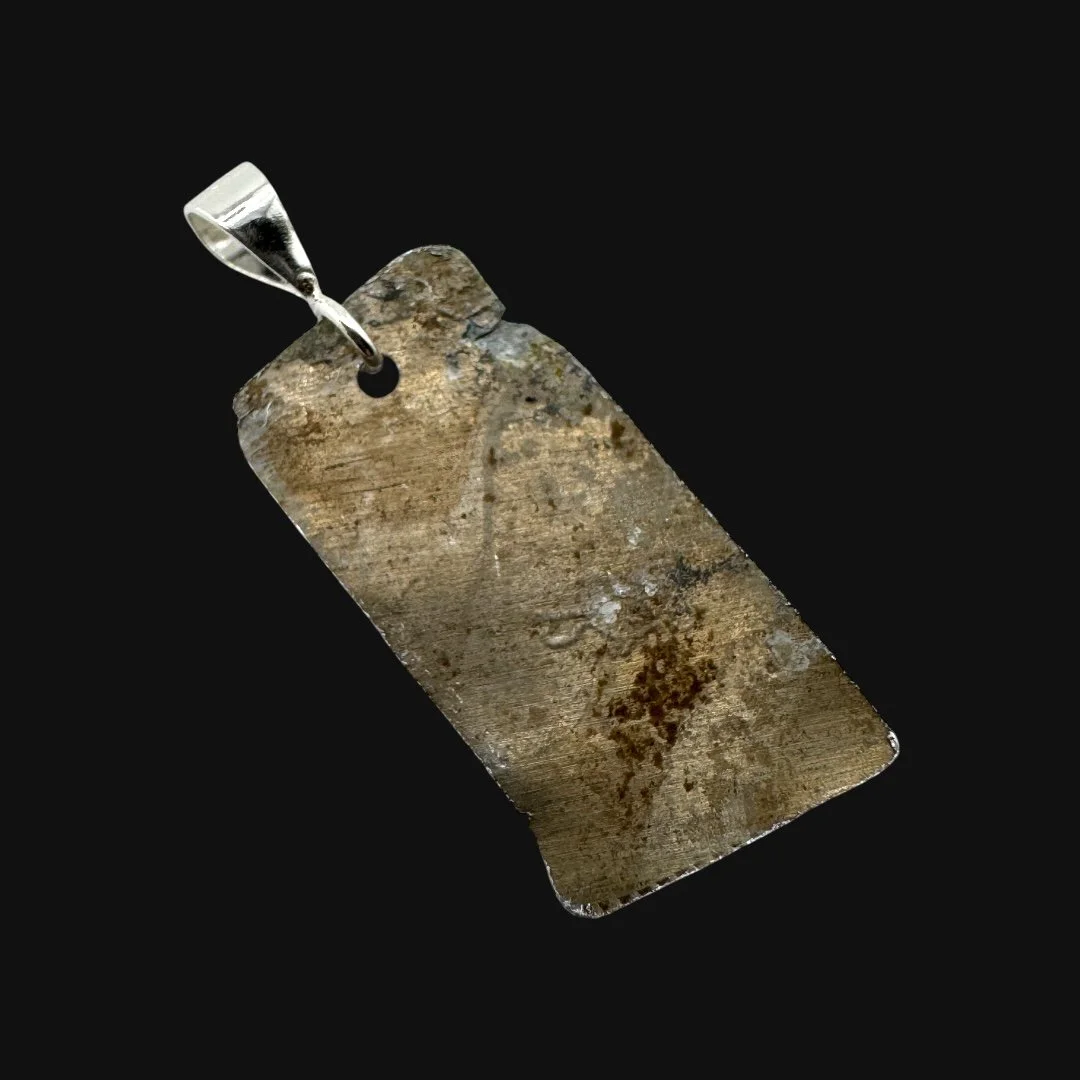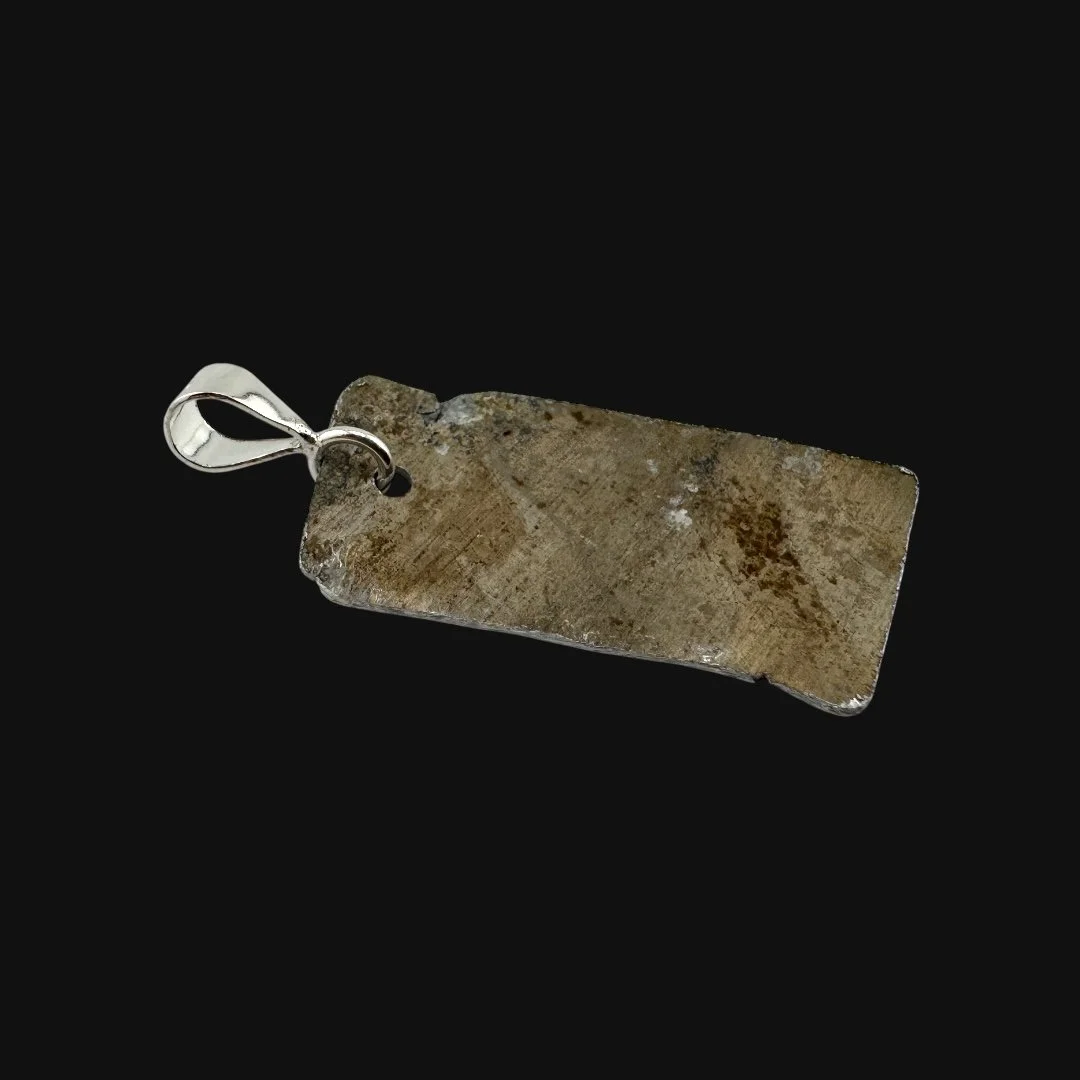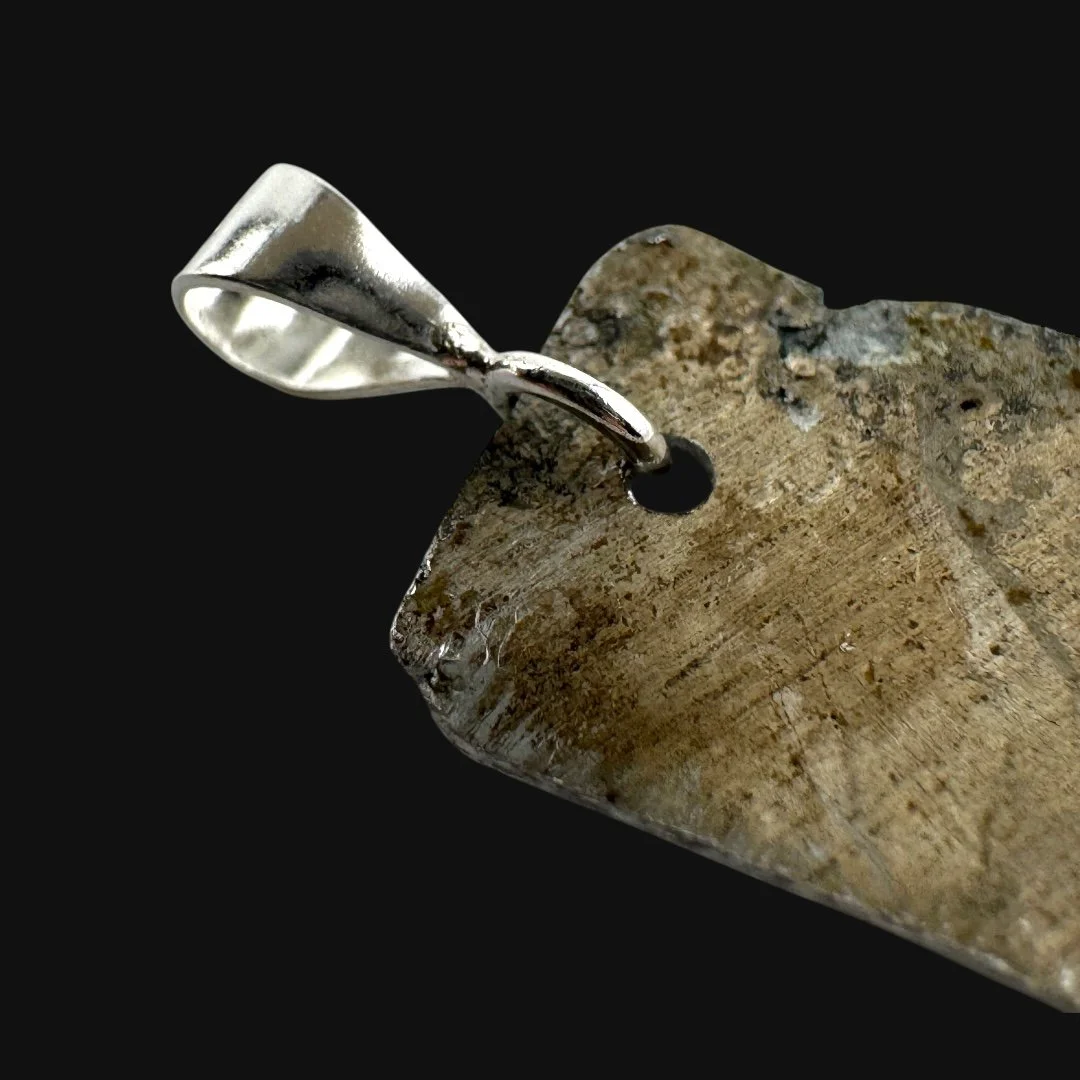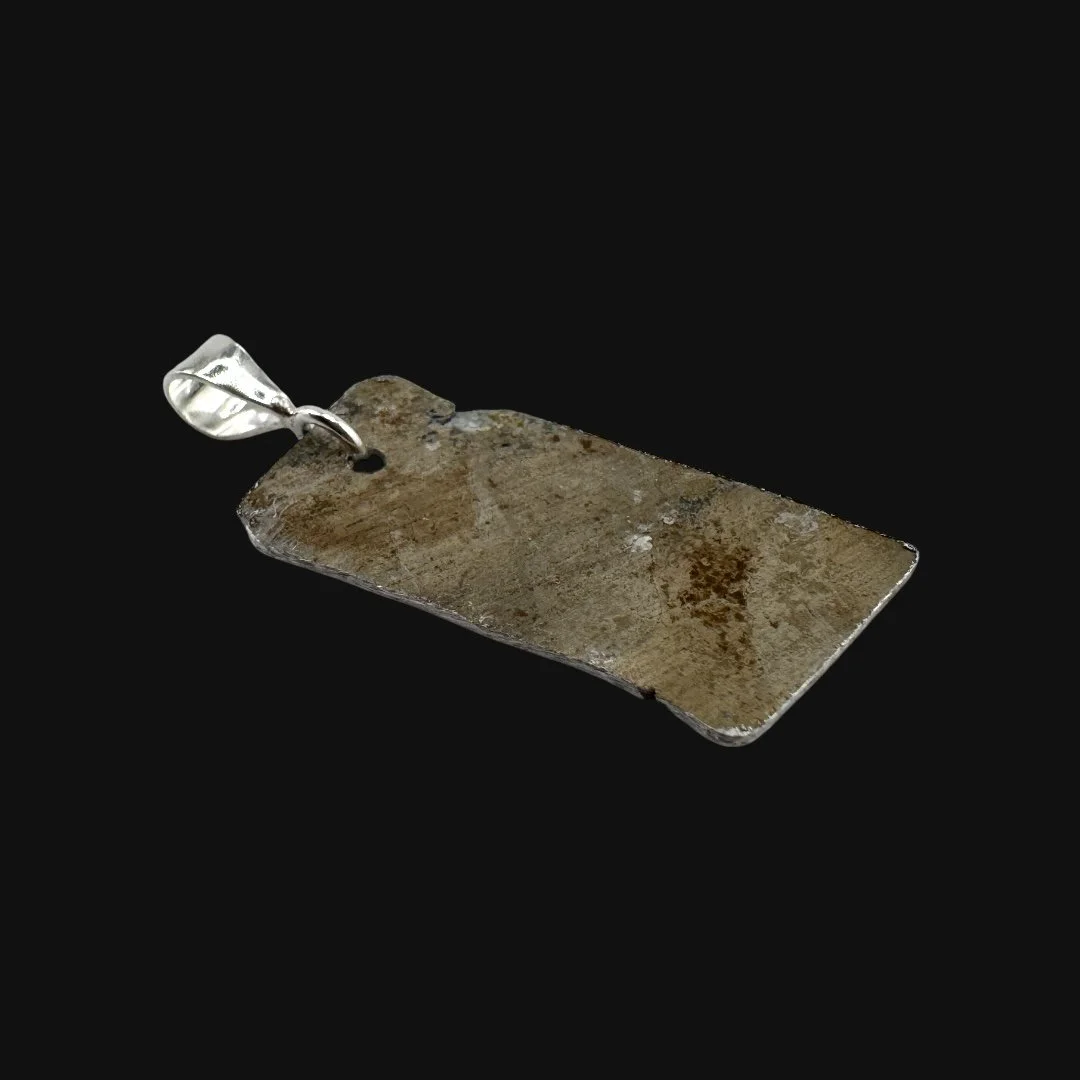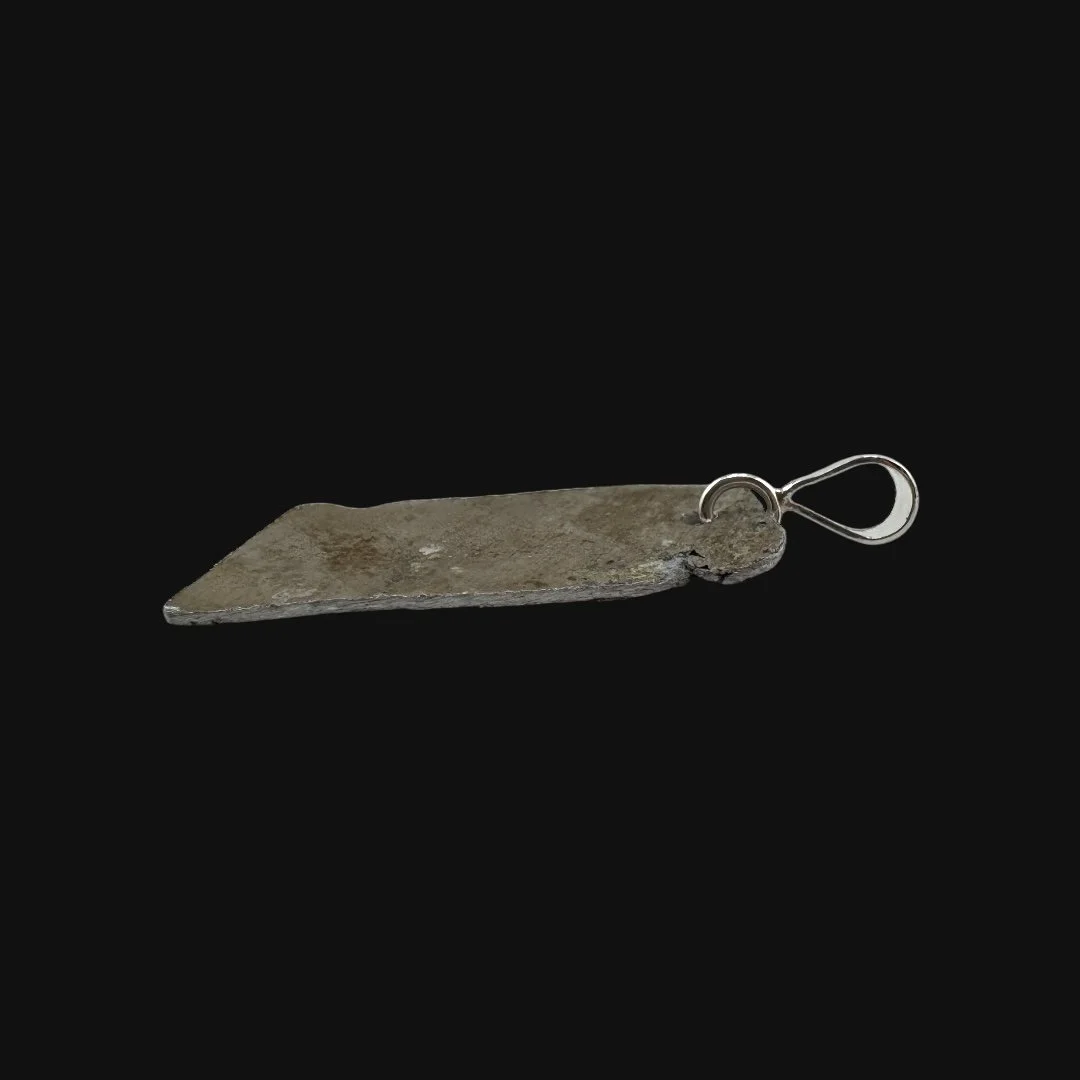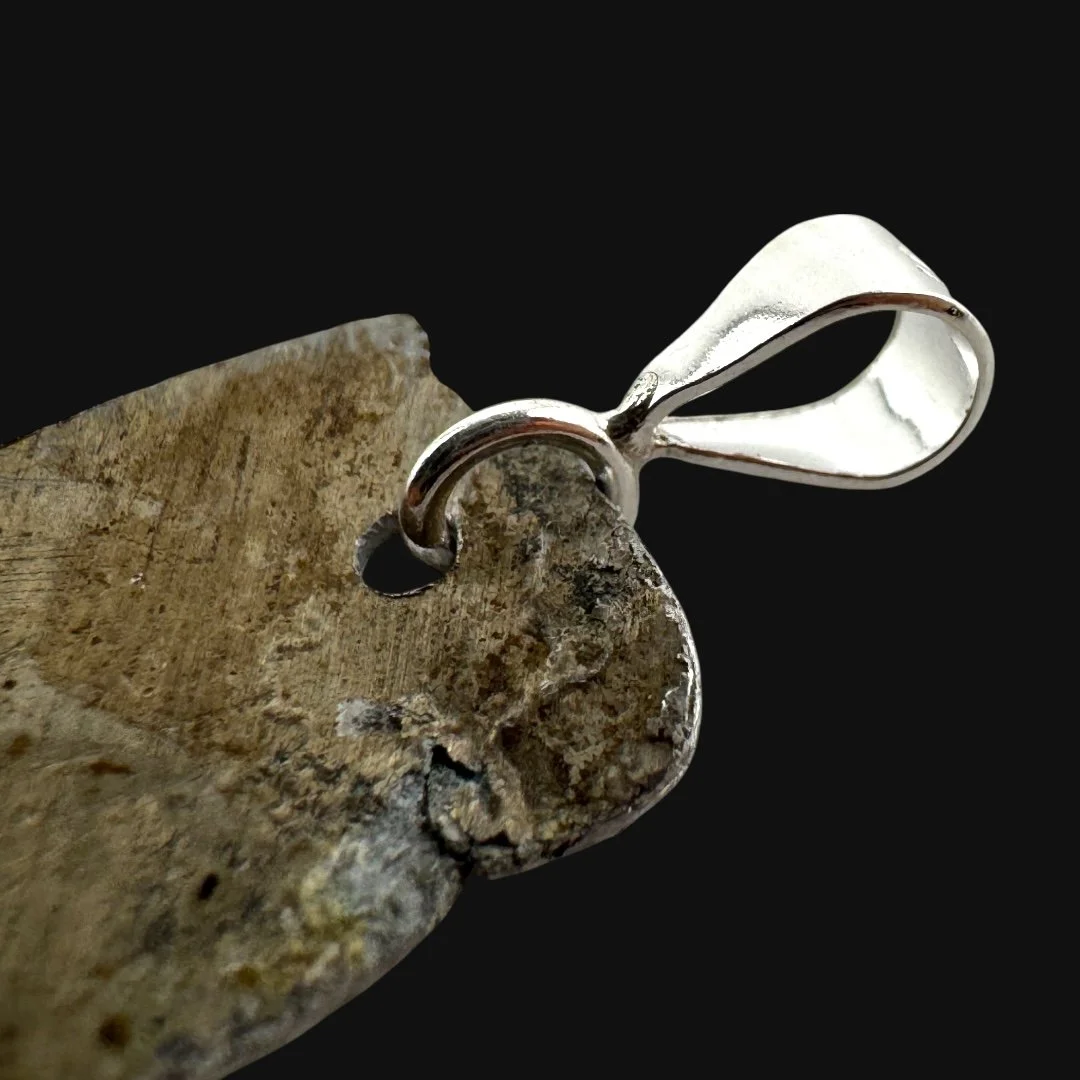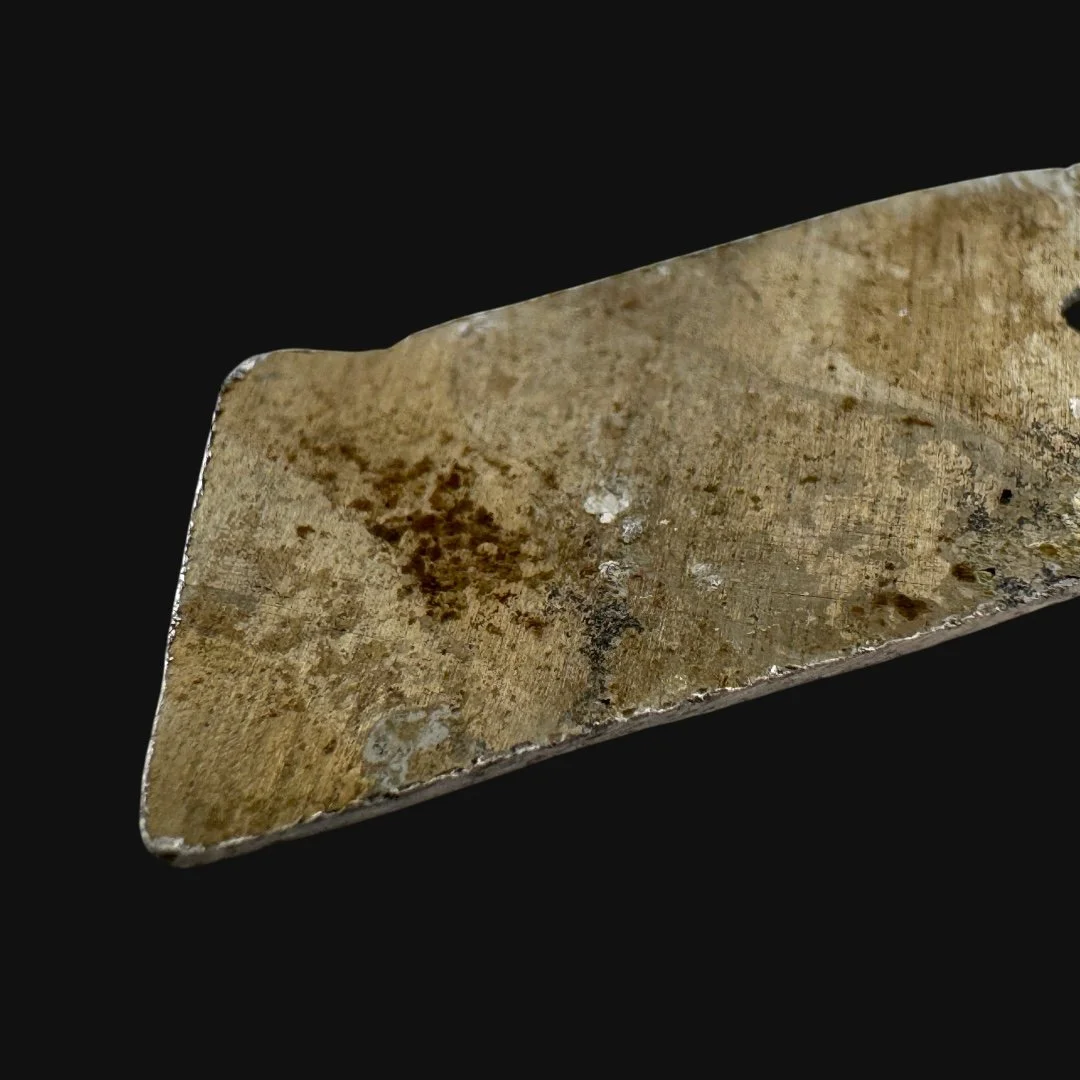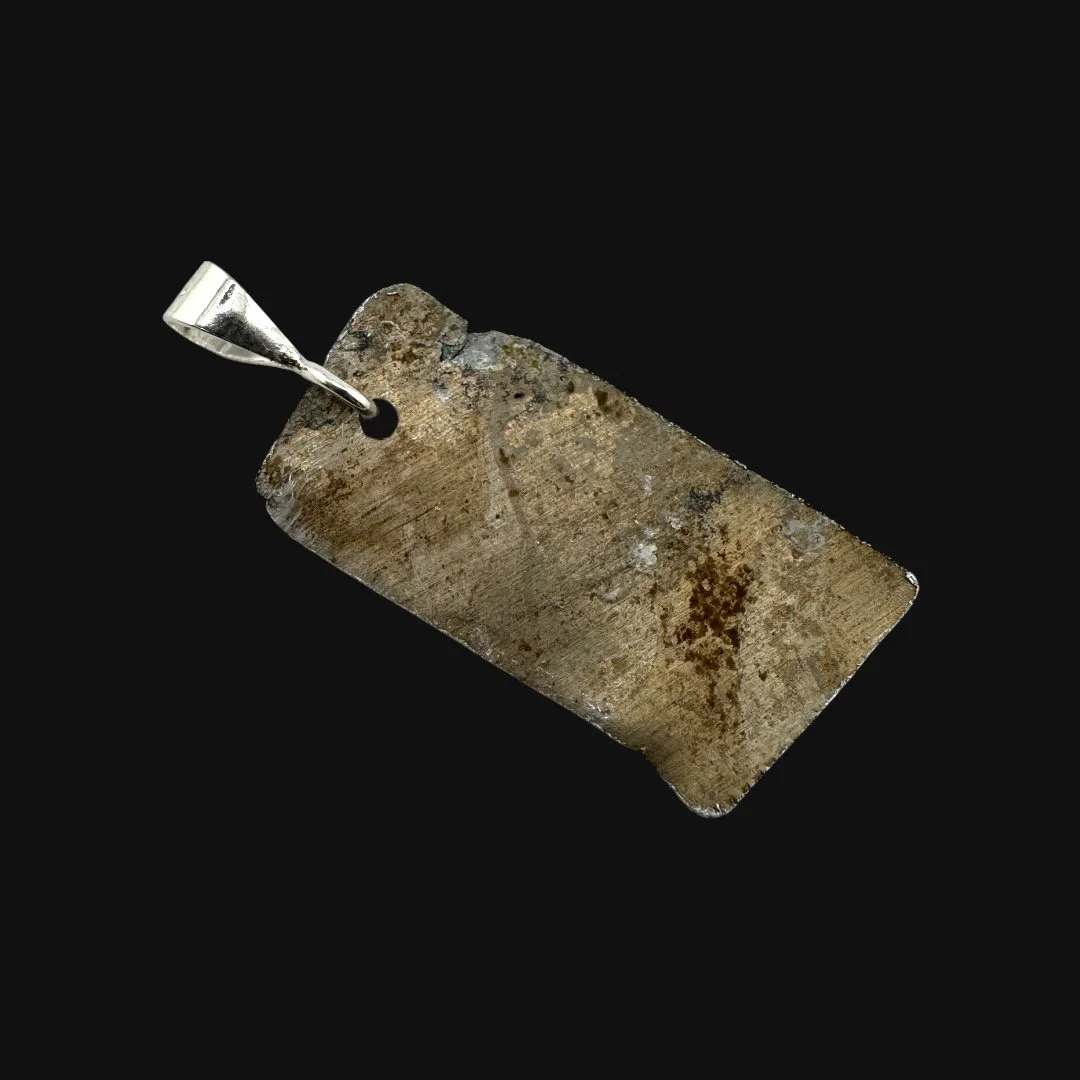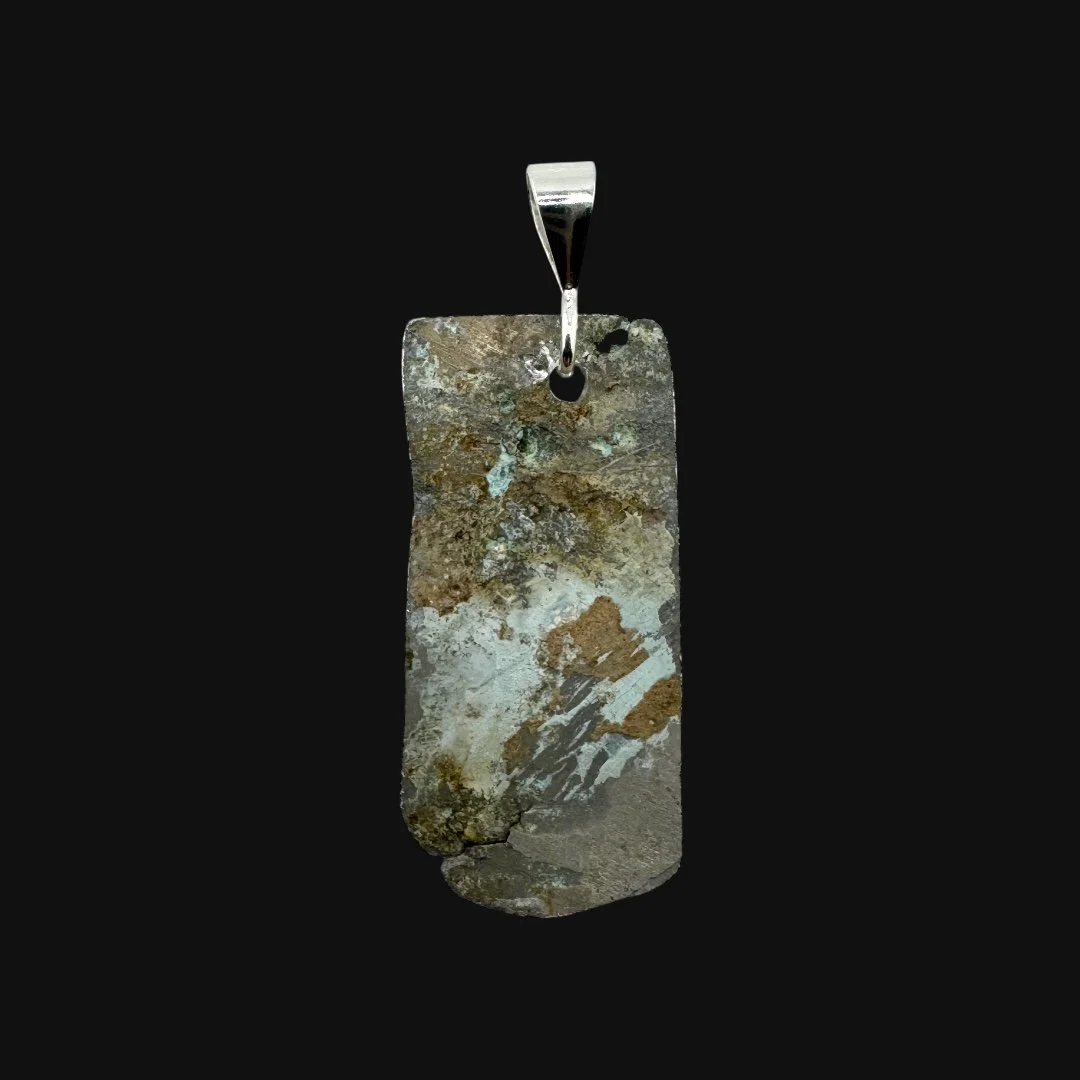 Image 1 of 10
Image 1 of 10

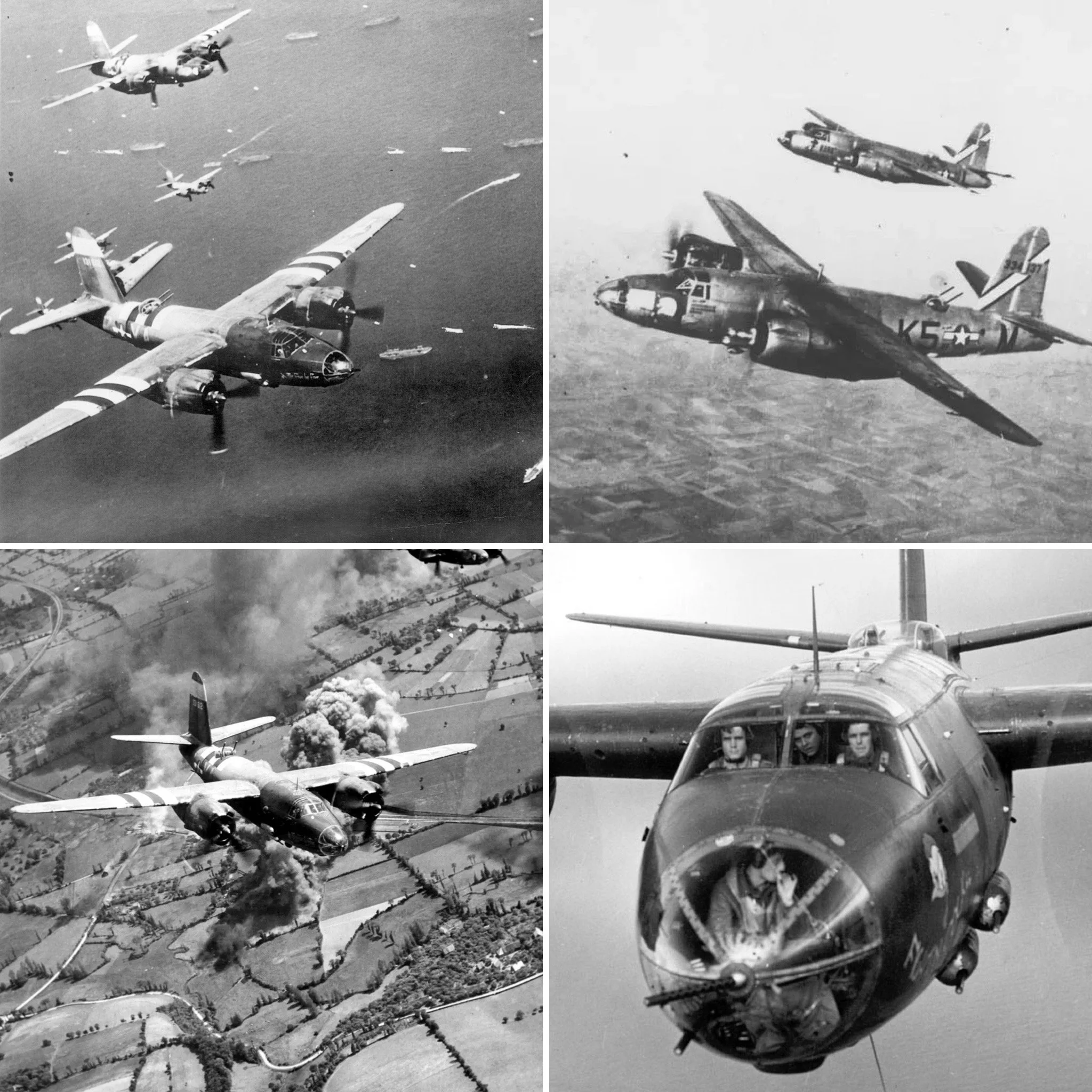 Image 2 of 10
Image 2 of 10

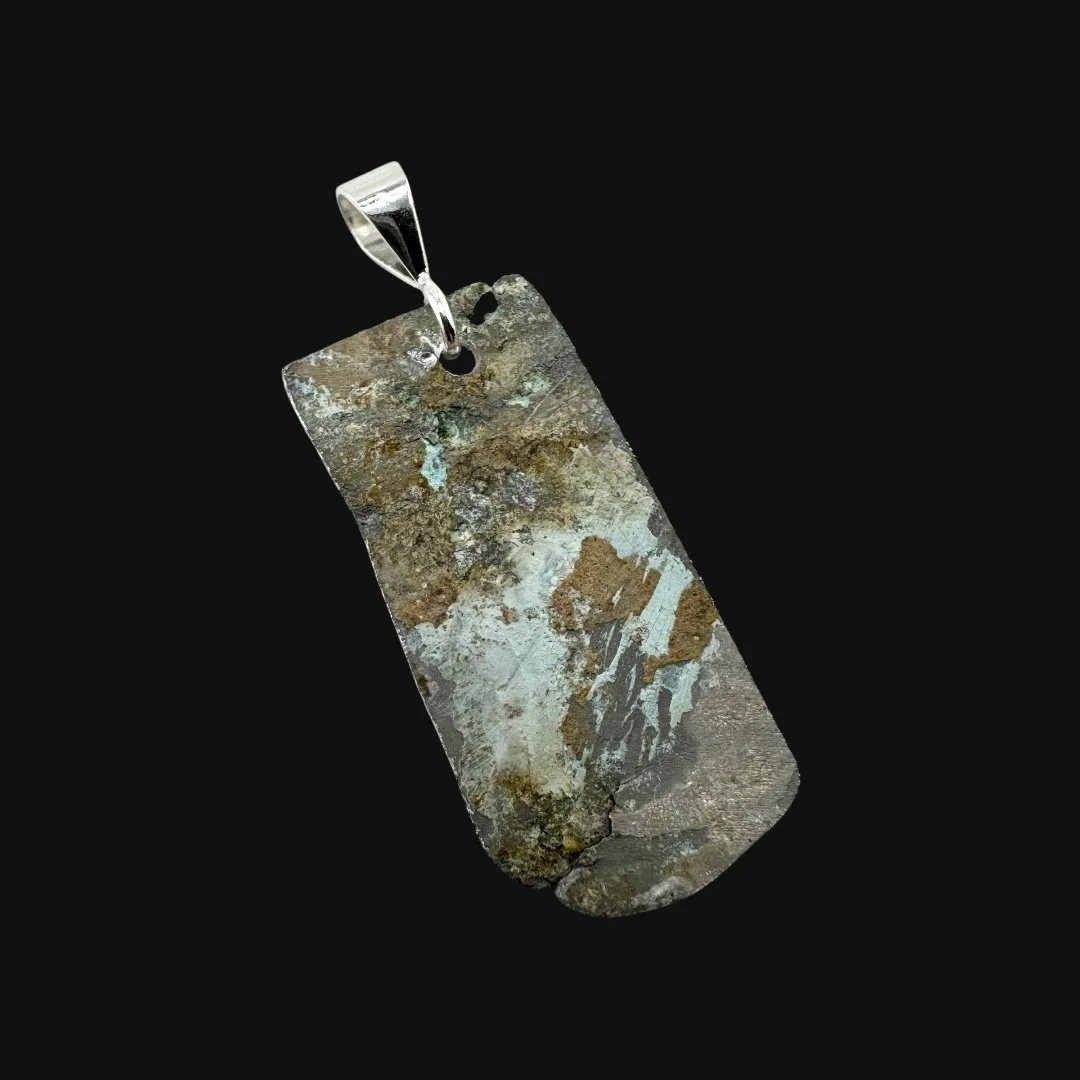 Image 3 of 10
Image 3 of 10

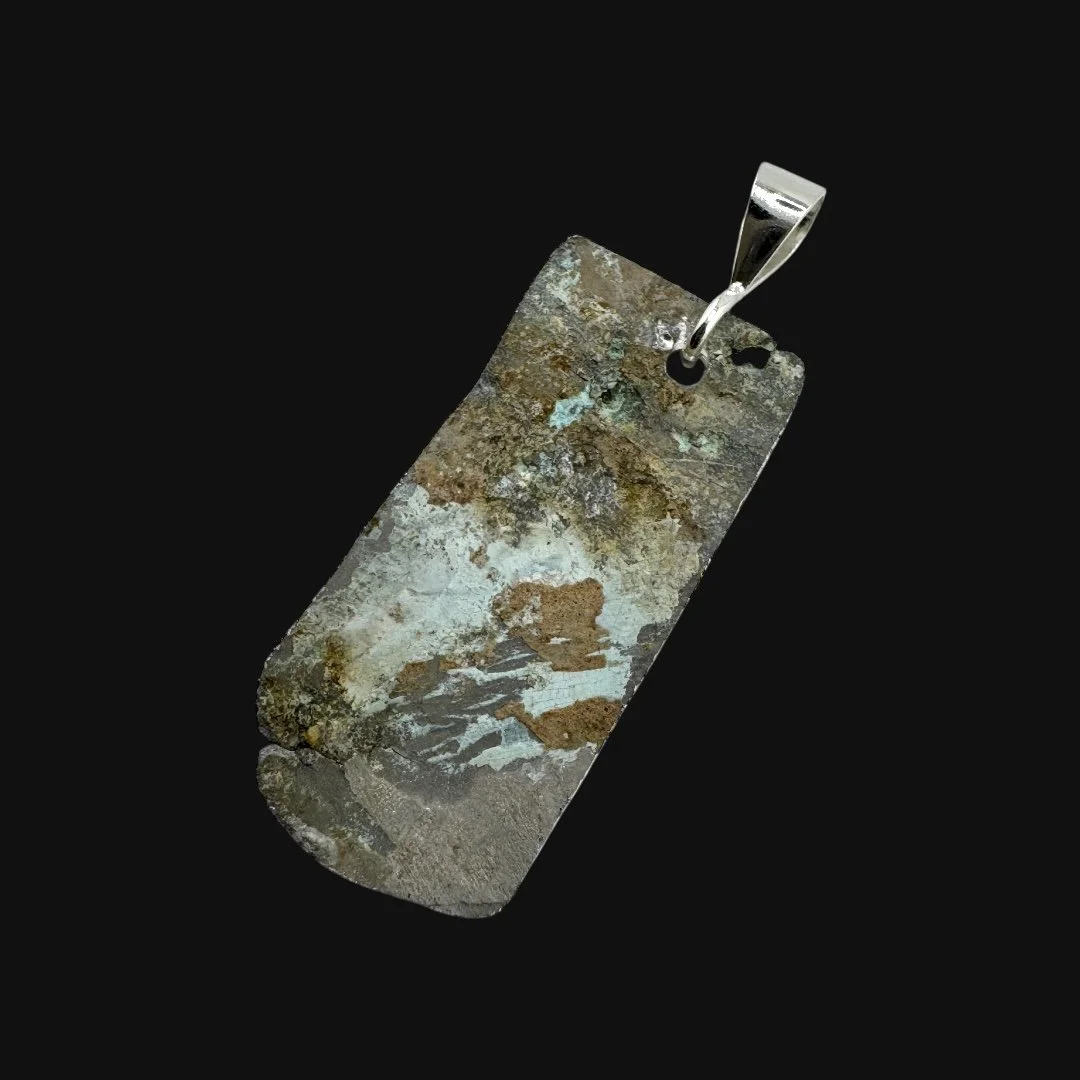 Image 4 of 10
Image 4 of 10

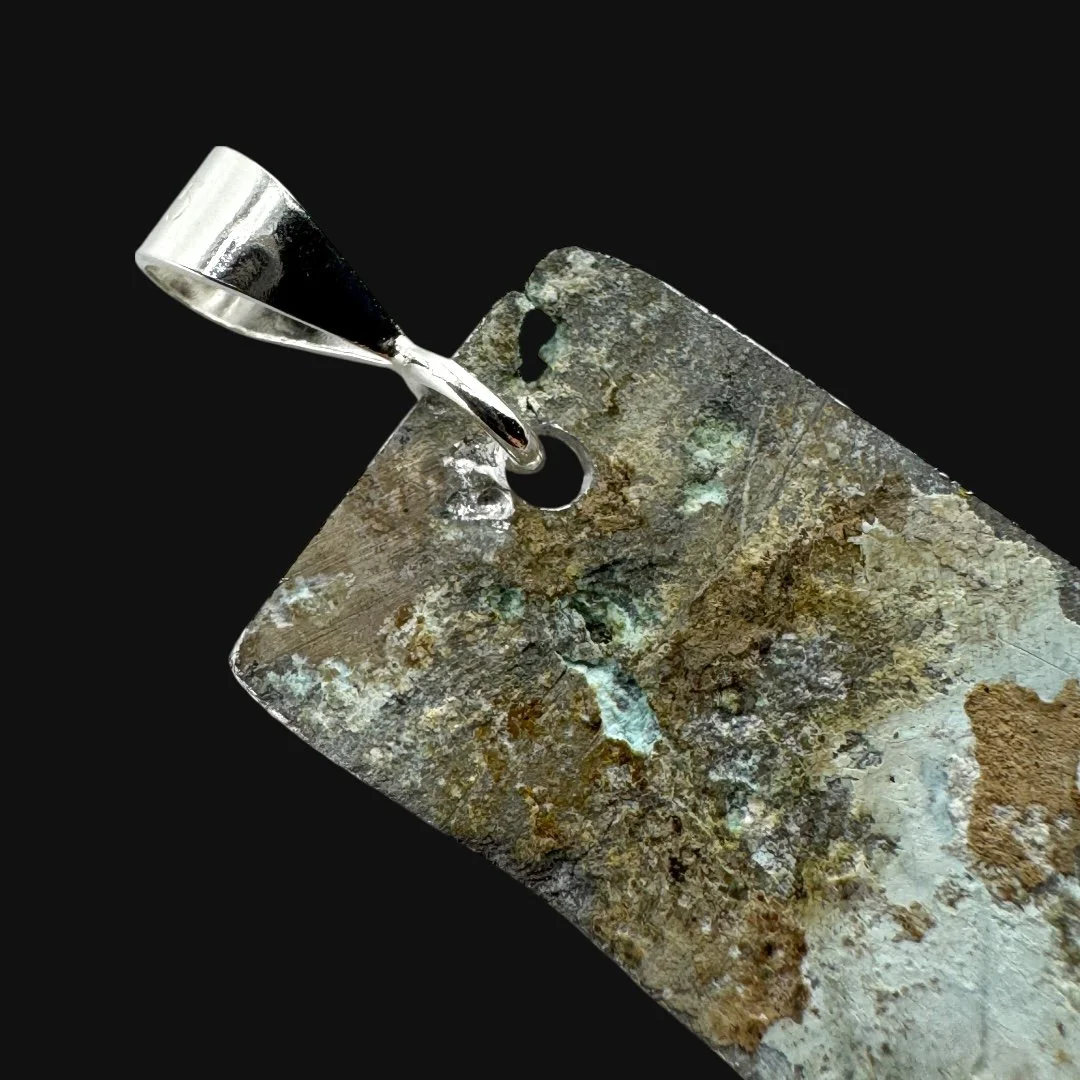 Image 5 of 10
Image 5 of 10

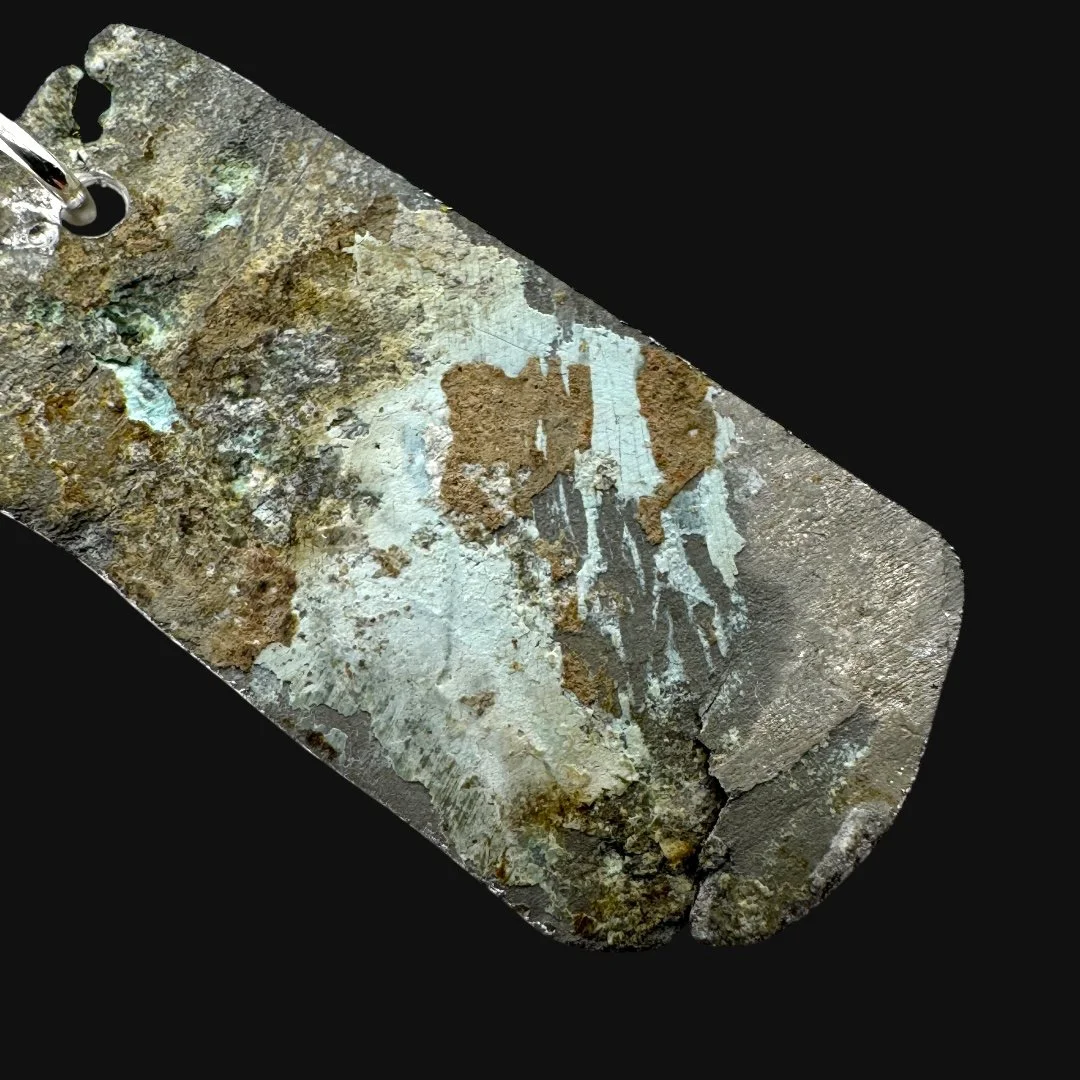 Image 6 of 10
Image 6 of 10

 Image 7 of 10
Image 7 of 10

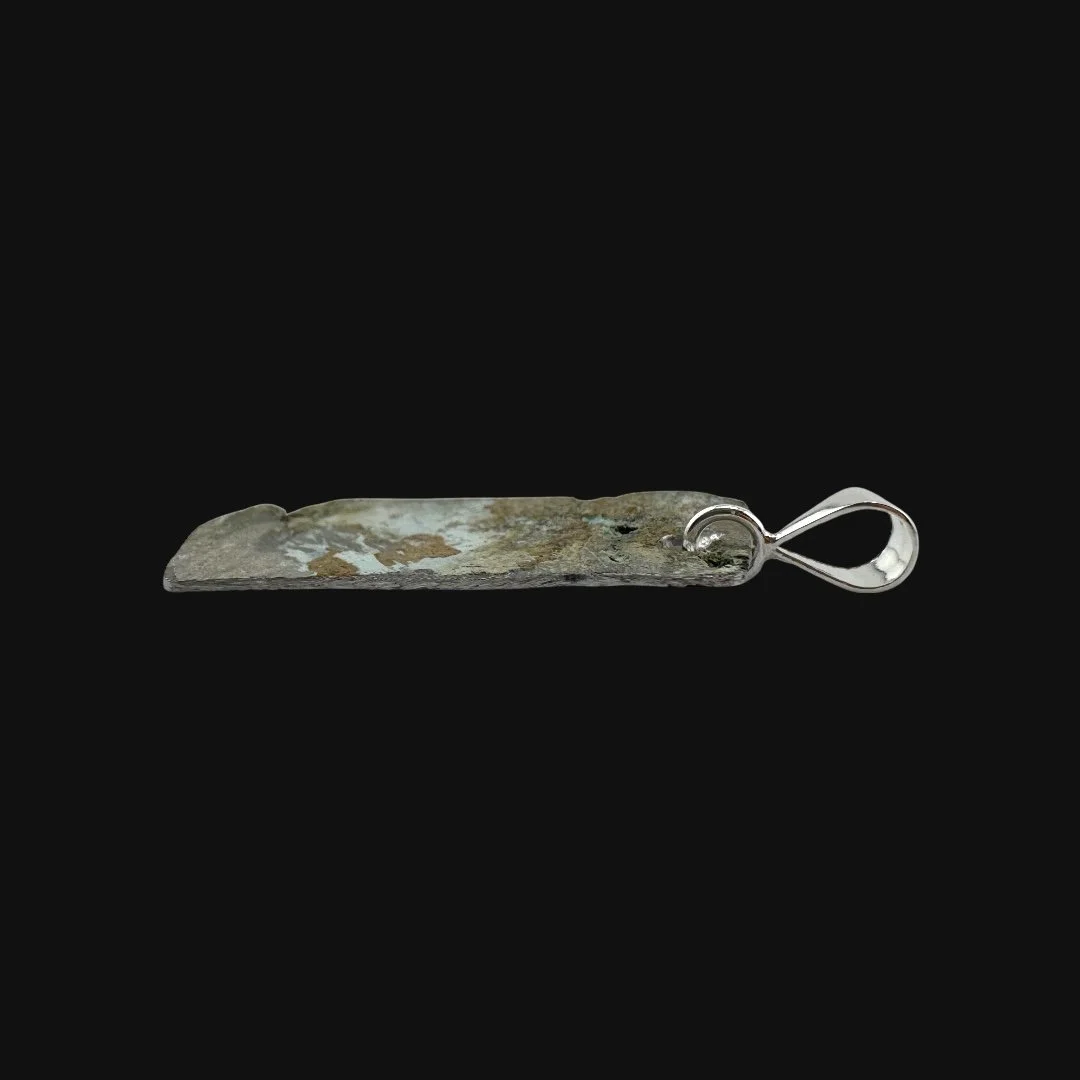 Image 8 of 10
Image 8 of 10

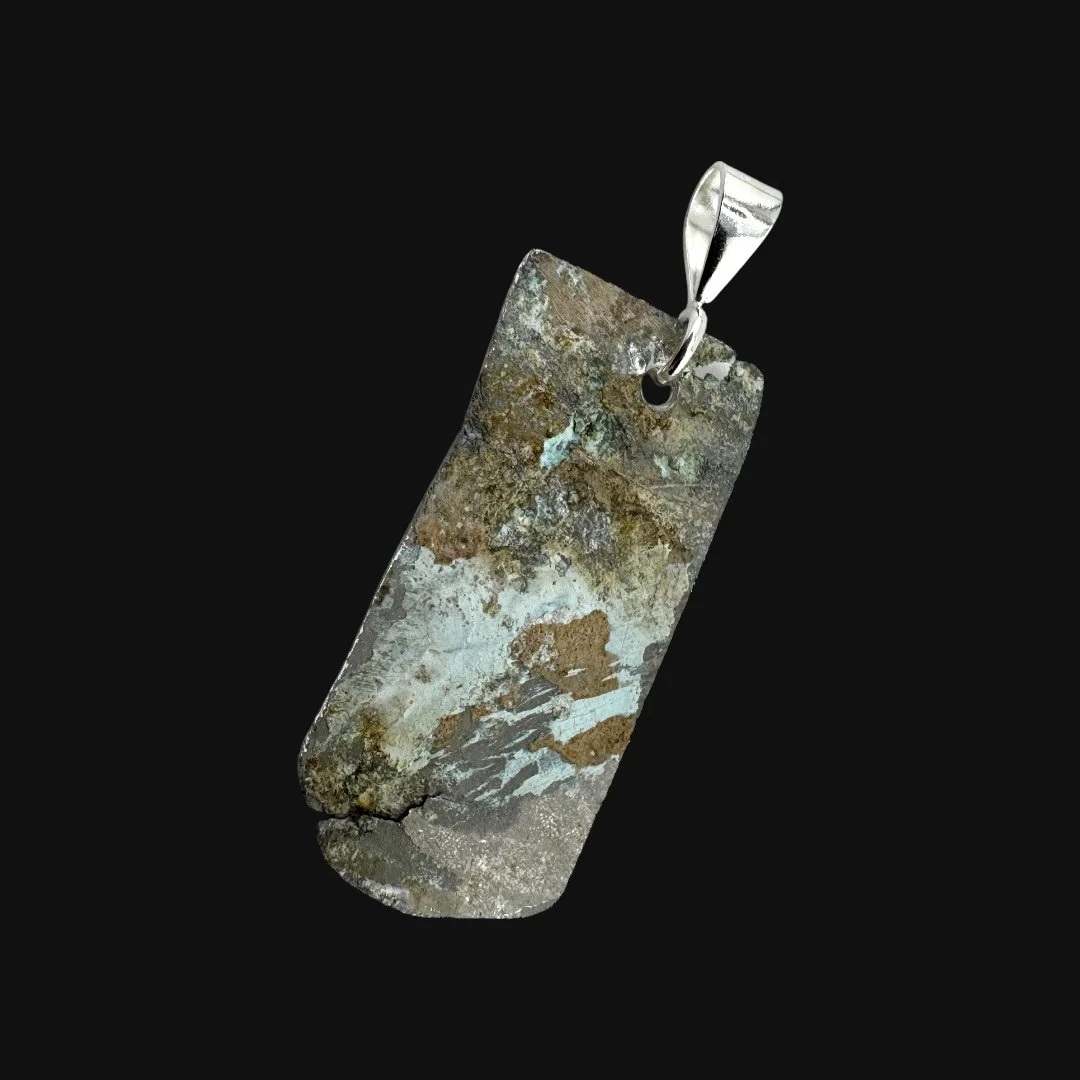 Image 9 of 10
Image 9 of 10

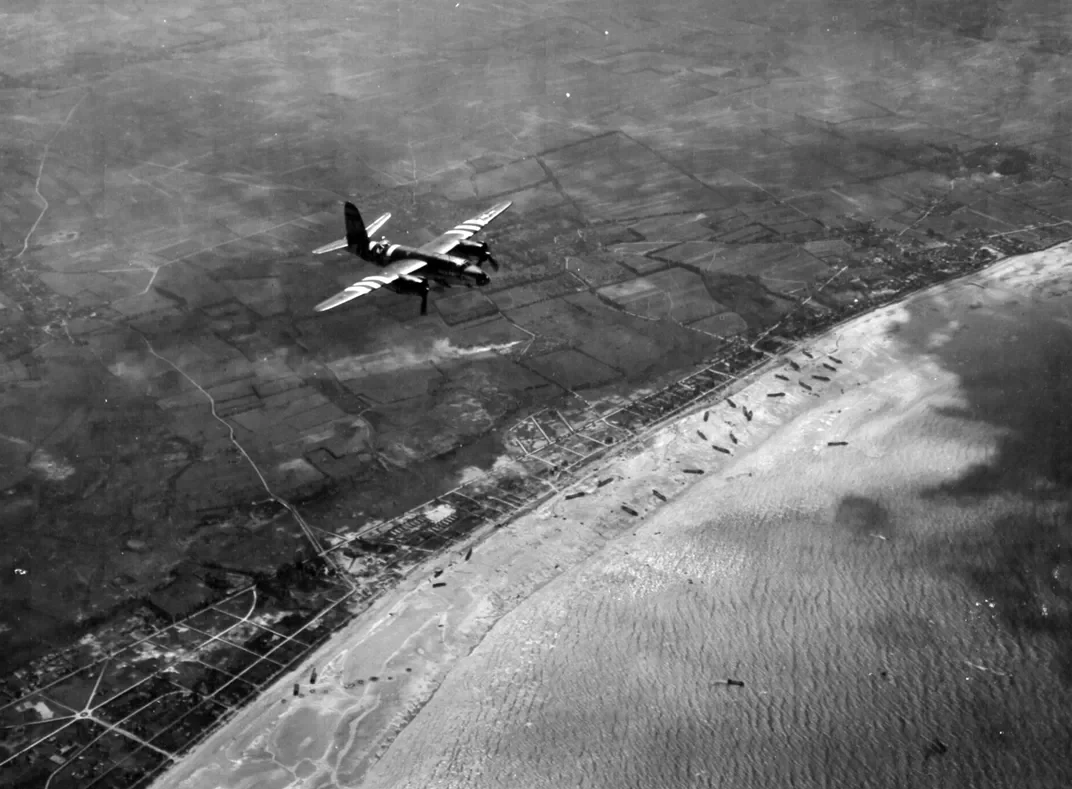 Image 10 of 10
Image 10 of 10











Original WWII June 6th, 1944 D-Day U.S. Martin B-26 Marauder "Combat Flown" 9th Air Force Medium Bomber Aircraft Metal Fragment Necklace Pendant (.925 Sterling Silver)
Comes with a hand-signed C.O.A. and a full historical research write-up
From: World War II
Dated: June 6th, 1944
Aircraft: Martin B-26 Marauder
Type: Medium Bomber
From: D-Day Mission “Combat Flown” U.S. Army Air Force (USAAF) 9th Air Force - 394th Bomb Group - 587th Bombardment Squadron
National Origin: United States (American)
Necklace Pendant Size: Roughly 1 inch x ½ inch
Pendant Clap Material: .925 Sterling Silver
*EACH WORLD WAR II “COMBAT FLOWN” AIRCRAFT METAL PENDANT IS HANDMADE AND TRULY ONE-OF-A-KIND. THIS IS THE EXACT WWII AIRCRAFT NECKLACE PENDANT YOU WILL RECEIVE.
Wearable History Collection:
This World War II necklace aircraft pendant is more truly one-of-a-kind. It is a preserved piece of an original WWII aircraft, transformed into a wearable artifact that carries with it the stories of a generation. No two pendants are alike, which makes each one truly unique and irreplaceable. Rich with aviation history, this “combat flown” aircraft pendant offers its wearer the rare chance to carry a genuine fragment of World War II aviation heritage. Every mark in the metal, every detail, holds a connection to the past and serves as a tangible reminder of courage, sacrifice, and resilience. As part of our exclusive Wearable History Collection, it is not only a timeless accessory but also a powerful conversation starter. Flown in the heat of combat during World War II and preserved across generations, this WWII aircraft pendant is a relic unlike any other. Featured in our Wearable History Collection, it represents a rare chance to wear a true fragment of the past.
Precision and Power: The Legacy of the Martin B-26 Marauder
The Martin B-26 Marauder was one of the most formidable medium bombers of the Second World War. Designed for speed and precision, the twin-engine aircraft earned both respect and notoriety. Early in the war, its high landing speeds and challenging flight characteristics gave it a reputation as the “Widowmaker.” But in skilled hands, the Marauder became a fast, resilient, and highly effective bomber that carried the fight deep into occupied Europe.
By 1943, Marauders were integrated into the 9th Air Force, where they would prove their worth as tactical bombers. Among the most distinguished units to fly them was the 394th Bomb Group, which became central to the air war over Western Europe. Operating from bases in England, the group specialized in precision strikes against bridges, rail lines, and fortified positions. These missions directly supported ground forces by disrupting German reinforcements and supply routes, setting the stage for the Allied invasion of France.
On D-Day, June 6, 1944, the Marauder came into its own. The 394th Bomb Group launched a series of carefully coordinated missions against German coastal defenses and transportation networks behind the beaches of Normandy. Flying through flak-filled skies, B-26 crews struck at critical road junctions, railway hubs, and artillery positions. Their objective was clear: isolate the battlefield, prevent German counterattacks, and give the landing forces a fighting chance. Unlike the heavy bombers that carpet-bombed inland, the Marauders of the 9th Air Force flew at lower altitudes, relying on speed and accuracy to deliver their payloads where they mattered most.
The Marauder’s contribution to D-Day cannot be overstated. By crippling transportation links and striking defensive positions, they ensured that German forces were delayed in mounting an organized counter-offensive. Casualties were heavy, but the precision and determination of the 394th Bomb Group helped secure the foothold that would ultimately liberate Western Europe.
In retrospect, the B-26 Marauder’s legacy is one of vindication. Once doubted, it went on to achieve the lowest loss rate of any Allied bomber in the European Theater. Its speed, durability, and accuracy made it indispensable to the tactical air war, particularly in the days when every bridge destroyed or train halted meant fewer German reinforcements on the front. For the crews of the 394th Bomb Group, the Marauder was not just a machine, but a weapon of precision that helped change the course of history.
Today, the Martin B-26 stands as a symbol of resilience and adaptation. Its role on D-Day with the 394th Bomb Group highlights the critical connection between air power and ground success, proving that victory in Normandy was as much about the skies as it was about the beaches.
The Marauder in the European War:
Early Combat and Growing Pains (1942–1943)
North Africa (1942–1943) – The Martin B-26 Marauder first entered combat in the Mediterranean Theater, where its speed and durability made it an asset for striking German supply lines. Initially known for its demanding flight characteristics, the Marauder earned a tough reputation. Yet, with experienced crews, it soon became one of the most reliable medium bombers in the Allied arsenal.
Italy and the Mediterranean Campaign (1943) – Marauders flew missions against bridges, railroads, and harbor facilities, disrupting Axis defenses as Allied forces advanced up the Italian peninsula.
Into the Heart of Europe (1943–1944)
Arrival in England – By late 1943, the B-26 had become a cornerstone of the 9th Air Force’s tactical bombing strategy. Among its most distinguished units was the 394th Bomb Group, stationed in England, tasked with crippling German transportation networks and softening fortifications ahead of the invasion of France.
Pre-Invasion Missions – Throughout early 1944, the 394th struck rail yards, bridges, and supply depots across occupied France. Every sortie weakened German mobility, paving the way for Operation Overlord.
D-Day and the Battle for Normandy (June 1944)
June 6, 1944 – On D-Day, Marauders of the 394th Bomb Group launched precision bombing runs against German gun emplacements, road junctions, and communication hubs near the Normandy coast. Flying at medium altitudes through anti-aircraft fire, they aimed to block German reinforcements from reaching the beaches. Their strikes on bridges and crossroads proved vital in isolating the battlefield and protecting Allied troops as they fought their way ashore.
Hedgerows of Normandy – In the weeks that followed, B-26 crews provided continuous support to ground forces, targeting fortified positions and supply lines deep in occupied France.
Driving Toward Victory (1944–1945)
Breakout from Normandy – The Marauder’s speed and precision allowed it to deliver punishing strikes on German defensive lines during Operation Cobra, helping the Allies break free from the bocage and begin the drive across France.
The Low Countries and the Rhine – As the war pressed eastward, Marauders hammered bridges and industrial targets, clearing the way for Allied advances into Belgium, Holland, and Germany itself.
Final Months of the War
Winter of 1944–1945 – During the Battle of the Bulge, Marauders flew in bitter weather to strike German supply depots and troop concentrations, supporting the embattled American lines.
Crossing the Rhine – In the final push into Germany, B-26s bombed enemy positions with relentless precision, hastening the collapse of Nazi defenses.
The Legacy Within This WWII Necklace Pendant:
This handcrafted World War II necklace pendant has been created from the very metal of a Martin B-26 Marauder bomber, once flown in combat during the largest invasion in history. The Marauder, known for its speed and precision, was the backbone of the 9th Air Force’s tactical bombing force. On June 6th, 1944, aircraft of the 394th Bomb Grouplaunched from English airfields to strike German defenses and transportation hubs, ensuring that reinforcements could not reach the beaches of Normandy.
Every mark in this metal carries echoes of that day. It recalls the thunder of engines as squadrons of Marauders roared across the Channel. It remembers the bursts of flak that filled the sky, and the resolve of crews who pressed on to deliver their bombs with accuracy. Transformed into a pendant, this fragment ceases to be a remnant of a machine alone. It becomes a symbol of precision, courage, and the pivotal moments that decided the fate of Europe.
Each pendant is unique, a singular survivor of history. To wear it is to hold not just jewelry, but a piece of the air war over Normandy. It sparks conversation, invites reflection, and connects the present to the legacy of those who flew against overwhelming odds. More than an accessory, this pendant is a living fragment of history. A remembrance of sacrifice. And a lasting tribute to the men and missions that carried D-Day to victory.
Comes with a hand-signed C.O.A. and a full historical research write-up
From: World War II
Dated: June 6th, 1944
Aircraft: Martin B-26 Marauder
Type: Medium Bomber
From: D-Day Mission “Combat Flown” U.S. Army Air Force (USAAF) 9th Air Force - 394th Bomb Group - 587th Bombardment Squadron
National Origin: United States (American)
Necklace Pendant Size: Roughly 1 inch x ½ inch
Pendant Clap Material: .925 Sterling Silver
*EACH WORLD WAR II “COMBAT FLOWN” AIRCRAFT METAL PENDANT IS HANDMADE AND TRULY ONE-OF-A-KIND. THIS IS THE EXACT WWII AIRCRAFT NECKLACE PENDANT YOU WILL RECEIVE.
Wearable History Collection:
This World War II necklace aircraft pendant is more truly one-of-a-kind. It is a preserved piece of an original WWII aircraft, transformed into a wearable artifact that carries with it the stories of a generation. No two pendants are alike, which makes each one truly unique and irreplaceable. Rich with aviation history, this “combat flown” aircraft pendant offers its wearer the rare chance to carry a genuine fragment of World War II aviation heritage. Every mark in the metal, every detail, holds a connection to the past and serves as a tangible reminder of courage, sacrifice, and resilience. As part of our exclusive Wearable History Collection, it is not only a timeless accessory but also a powerful conversation starter. Flown in the heat of combat during World War II and preserved across generations, this WWII aircraft pendant is a relic unlike any other. Featured in our Wearable History Collection, it represents a rare chance to wear a true fragment of the past.
Precision and Power: The Legacy of the Martin B-26 Marauder
The Martin B-26 Marauder was one of the most formidable medium bombers of the Second World War. Designed for speed and precision, the twin-engine aircraft earned both respect and notoriety. Early in the war, its high landing speeds and challenging flight characteristics gave it a reputation as the “Widowmaker.” But in skilled hands, the Marauder became a fast, resilient, and highly effective bomber that carried the fight deep into occupied Europe.
By 1943, Marauders were integrated into the 9th Air Force, where they would prove their worth as tactical bombers. Among the most distinguished units to fly them was the 394th Bomb Group, which became central to the air war over Western Europe. Operating from bases in England, the group specialized in precision strikes against bridges, rail lines, and fortified positions. These missions directly supported ground forces by disrupting German reinforcements and supply routes, setting the stage for the Allied invasion of France.
On D-Day, June 6, 1944, the Marauder came into its own. The 394th Bomb Group launched a series of carefully coordinated missions against German coastal defenses and transportation networks behind the beaches of Normandy. Flying through flak-filled skies, B-26 crews struck at critical road junctions, railway hubs, and artillery positions. Their objective was clear: isolate the battlefield, prevent German counterattacks, and give the landing forces a fighting chance. Unlike the heavy bombers that carpet-bombed inland, the Marauders of the 9th Air Force flew at lower altitudes, relying on speed and accuracy to deliver their payloads where they mattered most.
The Marauder’s contribution to D-Day cannot be overstated. By crippling transportation links and striking defensive positions, they ensured that German forces were delayed in mounting an organized counter-offensive. Casualties were heavy, but the precision and determination of the 394th Bomb Group helped secure the foothold that would ultimately liberate Western Europe.
In retrospect, the B-26 Marauder’s legacy is one of vindication. Once doubted, it went on to achieve the lowest loss rate of any Allied bomber in the European Theater. Its speed, durability, and accuracy made it indispensable to the tactical air war, particularly in the days when every bridge destroyed or train halted meant fewer German reinforcements on the front. For the crews of the 394th Bomb Group, the Marauder was not just a machine, but a weapon of precision that helped change the course of history.
Today, the Martin B-26 stands as a symbol of resilience and adaptation. Its role on D-Day with the 394th Bomb Group highlights the critical connection between air power and ground success, proving that victory in Normandy was as much about the skies as it was about the beaches.
The Marauder in the European War:
Early Combat and Growing Pains (1942–1943)
North Africa (1942–1943) – The Martin B-26 Marauder first entered combat in the Mediterranean Theater, where its speed and durability made it an asset for striking German supply lines. Initially known for its demanding flight characteristics, the Marauder earned a tough reputation. Yet, with experienced crews, it soon became one of the most reliable medium bombers in the Allied arsenal.
Italy and the Mediterranean Campaign (1943) – Marauders flew missions against bridges, railroads, and harbor facilities, disrupting Axis defenses as Allied forces advanced up the Italian peninsula.
Into the Heart of Europe (1943–1944)
Arrival in England – By late 1943, the B-26 had become a cornerstone of the 9th Air Force’s tactical bombing strategy. Among its most distinguished units was the 394th Bomb Group, stationed in England, tasked with crippling German transportation networks and softening fortifications ahead of the invasion of France.
Pre-Invasion Missions – Throughout early 1944, the 394th struck rail yards, bridges, and supply depots across occupied France. Every sortie weakened German mobility, paving the way for Operation Overlord.
D-Day and the Battle for Normandy (June 1944)
June 6, 1944 – On D-Day, Marauders of the 394th Bomb Group launched precision bombing runs against German gun emplacements, road junctions, and communication hubs near the Normandy coast. Flying at medium altitudes through anti-aircraft fire, they aimed to block German reinforcements from reaching the beaches. Their strikes on bridges and crossroads proved vital in isolating the battlefield and protecting Allied troops as they fought their way ashore.
Hedgerows of Normandy – In the weeks that followed, B-26 crews provided continuous support to ground forces, targeting fortified positions and supply lines deep in occupied France.
Driving Toward Victory (1944–1945)
Breakout from Normandy – The Marauder’s speed and precision allowed it to deliver punishing strikes on German defensive lines during Operation Cobra, helping the Allies break free from the bocage and begin the drive across France.
The Low Countries and the Rhine – As the war pressed eastward, Marauders hammered bridges and industrial targets, clearing the way for Allied advances into Belgium, Holland, and Germany itself.
Final Months of the War
Winter of 1944–1945 – During the Battle of the Bulge, Marauders flew in bitter weather to strike German supply depots and troop concentrations, supporting the embattled American lines.
Crossing the Rhine – In the final push into Germany, B-26s bombed enemy positions with relentless precision, hastening the collapse of Nazi defenses.
The Legacy Within This WWII Necklace Pendant:
This handcrafted World War II necklace pendant has been created from the very metal of a Martin B-26 Marauder bomber, once flown in combat during the largest invasion in history. The Marauder, known for its speed and precision, was the backbone of the 9th Air Force’s tactical bombing force. On June 6th, 1944, aircraft of the 394th Bomb Grouplaunched from English airfields to strike German defenses and transportation hubs, ensuring that reinforcements could not reach the beaches of Normandy.
Every mark in this metal carries echoes of that day. It recalls the thunder of engines as squadrons of Marauders roared across the Channel. It remembers the bursts of flak that filled the sky, and the resolve of crews who pressed on to deliver their bombs with accuracy. Transformed into a pendant, this fragment ceases to be a remnant of a machine alone. It becomes a symbol of precision, courage, and the pivotal moments that decided the fate of Europe.
Each pendant is unique, a singular survivor of history. To wear it is to hold not just jewelry, but a piece of the air war over Normandy. It sparks conversation, invites reflection, and connects the present to the legacy of those who flew against overwhelming odds. More than an accessory, this pendant is a living fragment of history. A remembrance of sacrifice. And a lasting tribute to the men and missions that carried D-Day to victory.
